Foods we fell in love with when we grew up
Childhood favorites from the 1950s to now
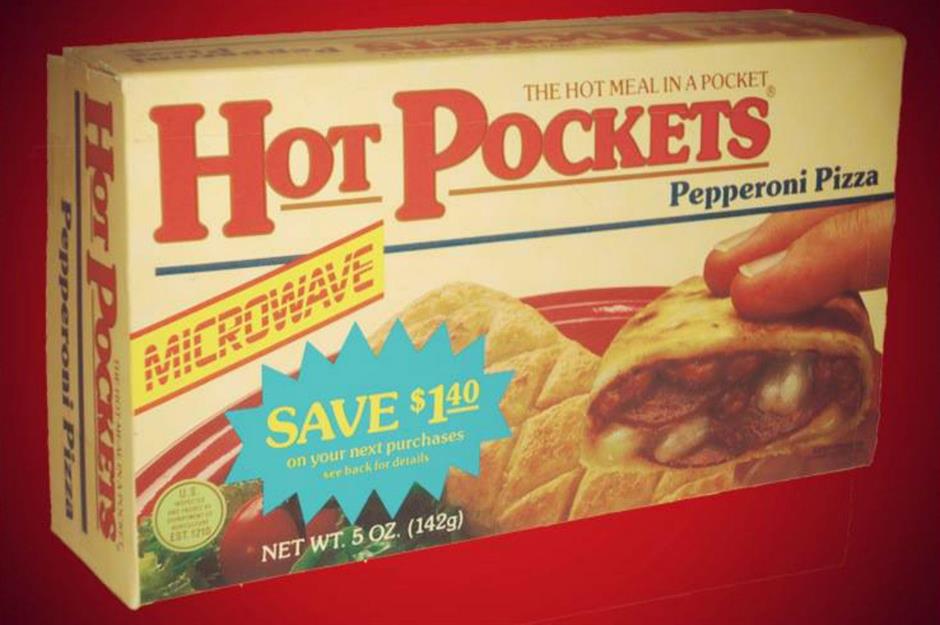
Remember when TV dinners were cutting edge, so-called continental cuisine epitomized glamour, and Spam on toast was a perfectly normal thing to eat? From the 1950s to the 2000s, and from after-school snacks and candy to fast food and family recipes, here are the favorite foods that everyone in Canada and the US grew up eating, decade by decade.
Click or scroll through our gallery of retro foods to discover the foods we've fallen in love with through the years. How many do you remember – and which ones are still around today?
1950s: Betty Crocker cake mix
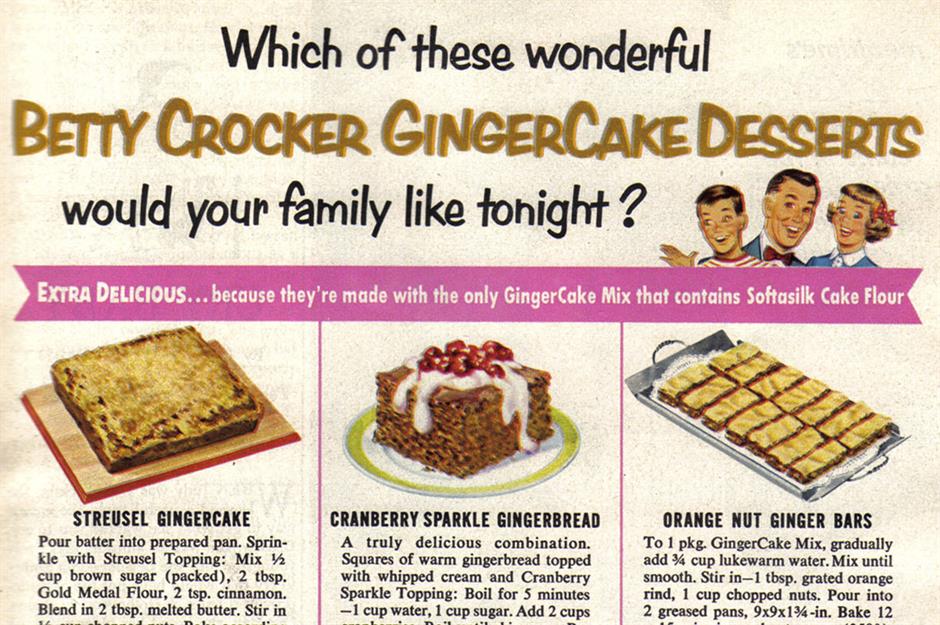
Many of us have fond memories of baking with mom or grandma, and things became a lot easier after the introduction of cake mix in the 1930s. However, these convenient packets didn't properly take off until savvy companies introduced frosting and other ready-made decorating items, making the process feel more hands-on. Cake-mix connoisseur brand Betty Crocker brilliantly tapped into the psyche of the 1950s home cook, and still thrives to this day.
1950s: cheese slices
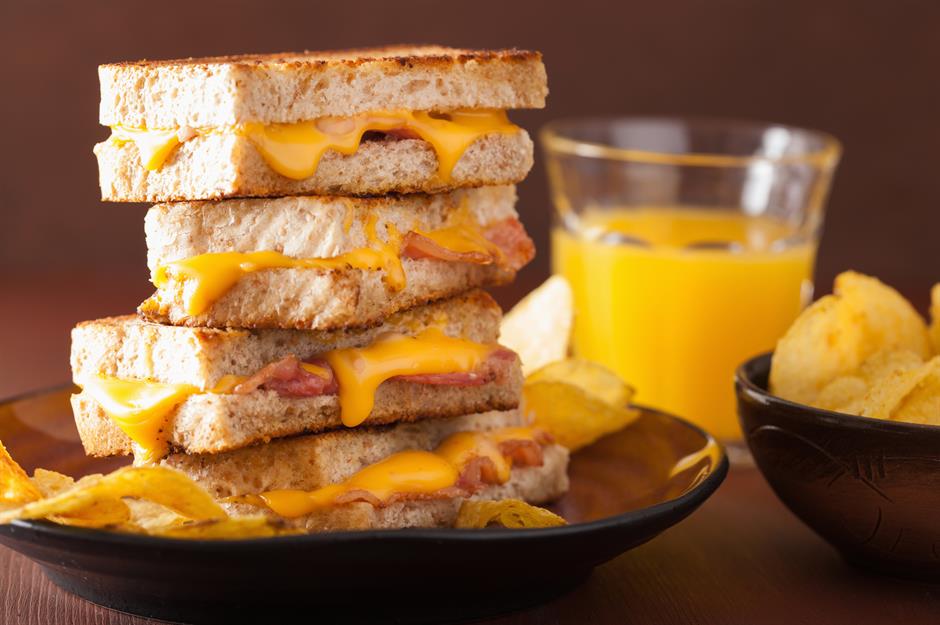
Ever-popular processed cheese was invented in Switzerland in the early 20th century. But it was Kraft Foods that, in the 1950s, introduced Kraft Deluxe Process Slices: pre-sliced cheese squares for cheeseburgers and sandwiches. In 1965, they came out with Kraft Singles – individually wrapped slices of cheese. They're convenient, have a longer shelf life than natural cheese, melt evenly, and have a mild flavor, which has helped them to endure over the decades.
1950s: Frosted Flakes
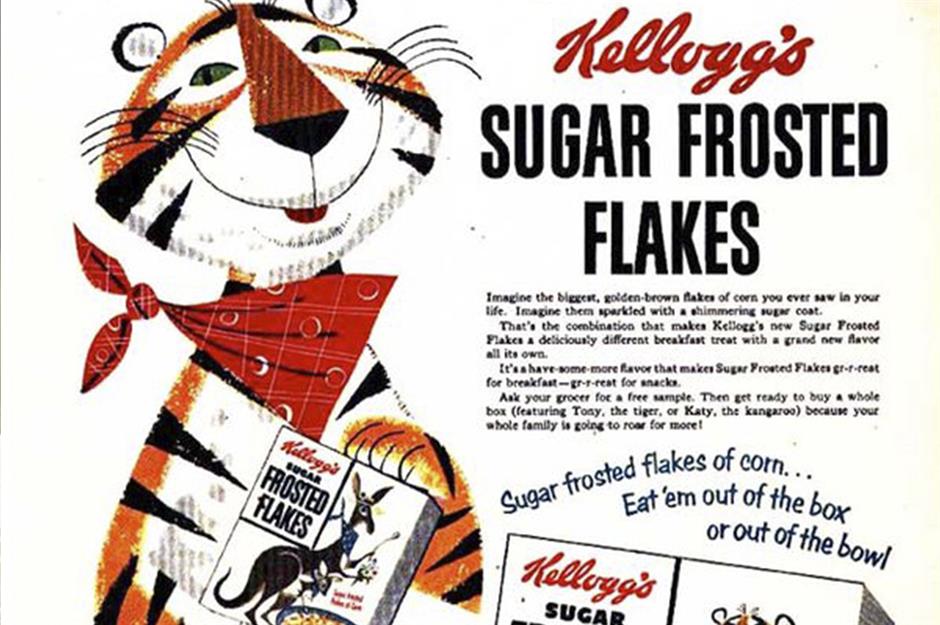
In 1952, Kellogg’s introduced Sugar Frosted Flakes – sugar-coated Corn Flakes. It wasn't until the 1980s that the word 'sugar' was dropped from the name. To this day, though, they're still marketed by legendary mascot Tony the Tiger and his famous catchphrase: "They're Gr-r-reat!" Other iconic cereals of the period include Special K, launched in 1955, and Cocoa Krispies, introduced in 1958.
1950s: frozen pizza
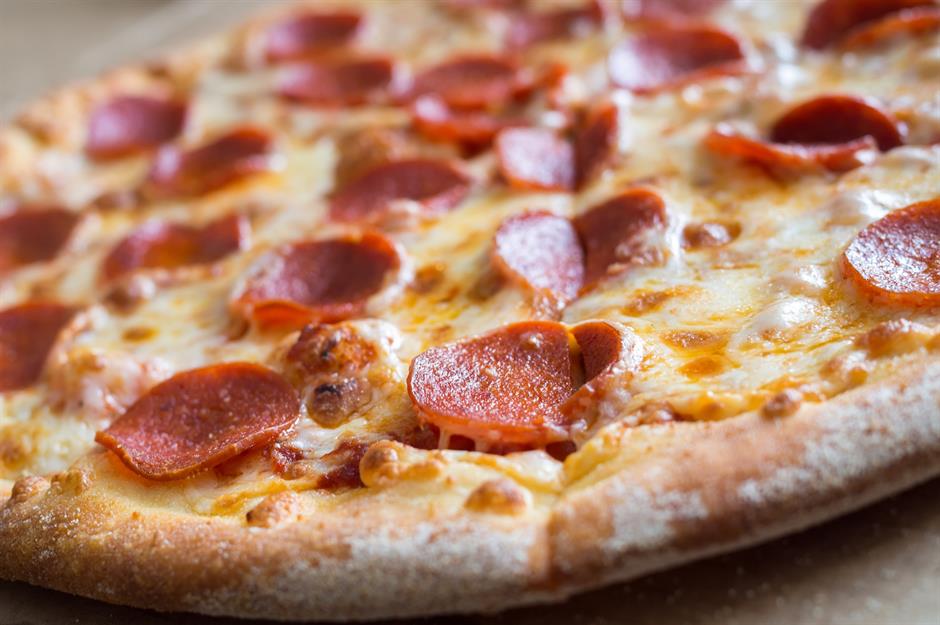
Refrigerators with freezer compartments became more common in 1950s homes and frozen food, which had been available since the 1930s courtesy of Clarence Birdseye, really took off. The origins of frozen pizza are disputed; the Celentano Brothers brand is often credited with having the first pizzas on the shelves, sometime in the 1950s, but it's Totino’s that became a market leader.
1950s: Bananas Foster
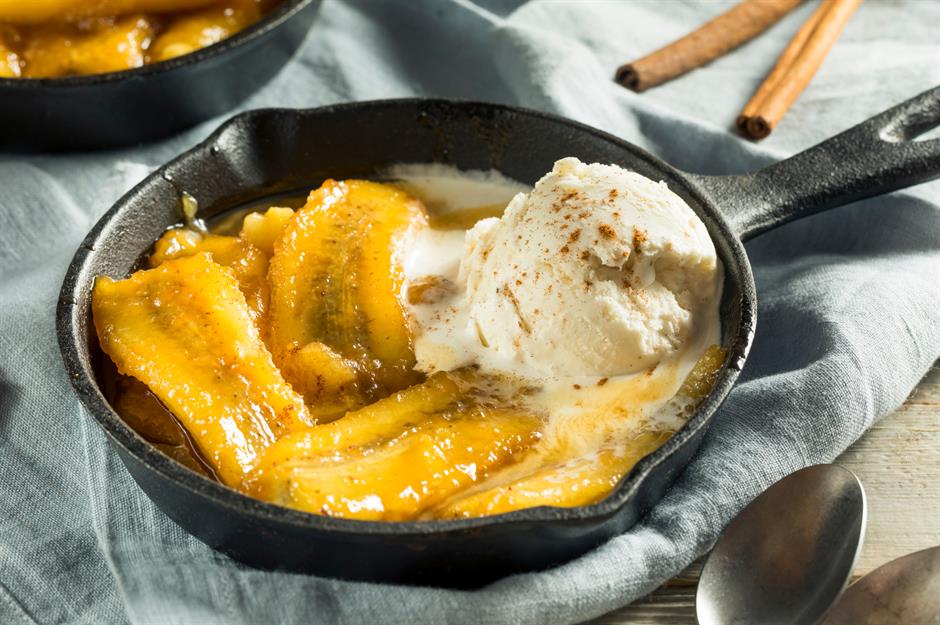
This indulgent dessert of bananas flambéed with brown sugar, butter, cinnamon, dark rum, and banana liqueur, served with ice cream, was created in 1951 at Brennan’s Restaurant in New Orleans, Louisiana. In the early 1950s, New Orleans was a major import hub for bananas and the dish was named in honor of Richard Foster, then-chairman of the city’s Crime Commission.
1950s: Spam
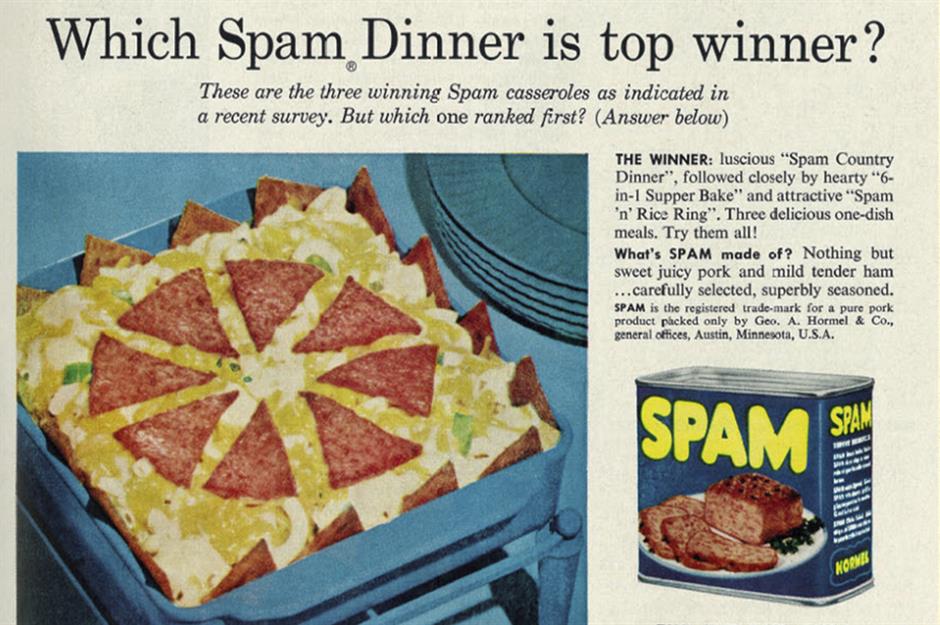
A staple of childhood dinners in the 1950s, divisive pre-cooked pork product Spam was actually created in 1937, and proved vital in feeding military troops. By 1959, one billion cans had been sold. It continues to be a popular dish in the state of Hawaii, which has the highest per capita consumption in the US.
1950s: Tropicana
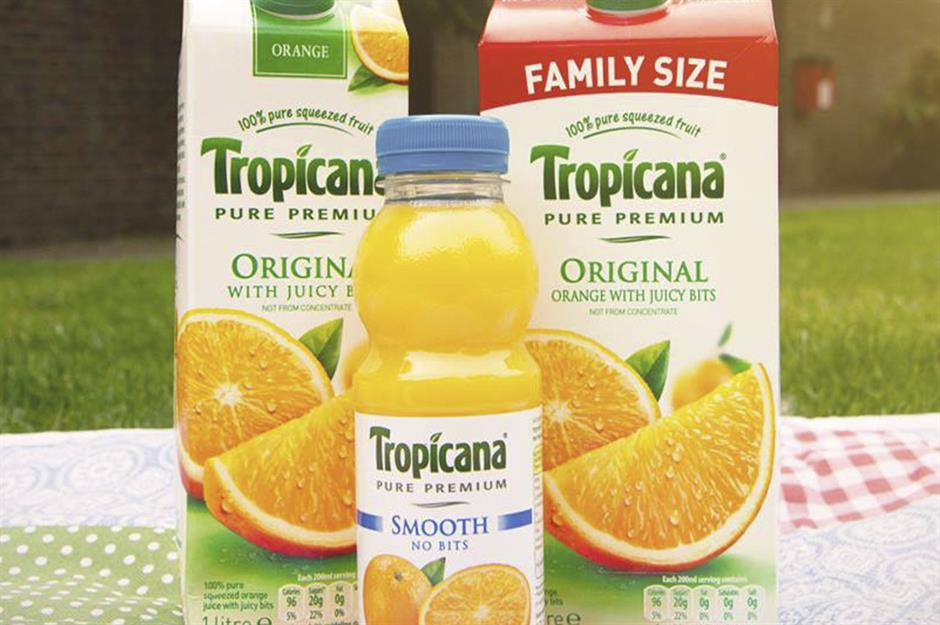
Fresh orange juice is a breakfast must-have for many, and in 1954 Tropicana revolutionized the humble OJ. Anthony T Rossi – who founded the Tropicana brand in 1947 – used flash pasteurization to preserve the fresh taste of fruit juice. The resulting product proved so popular that the company used a ship, the S.S. Tropicana, to transport millions of gallons of juice from Florida to New York.
1950s: Coca-Cola
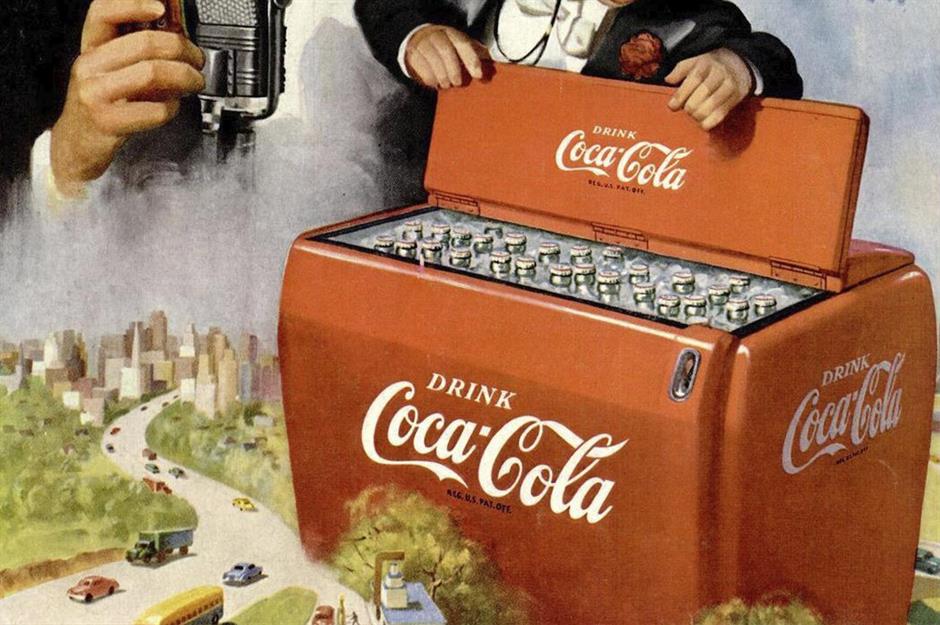
Already a huge seller in the US by the 1950s, Coca-Cola became even more popular, with this post-war decade often regarded as the drink’s golden age. TV adverts depicting the soft drink as synonymous with pleasure beamed into people’s homes, and it was also the era that Coca-Cola brought out flat-top cans and different-sized bottles, increasing its popularity even further.
1950s: diet soda
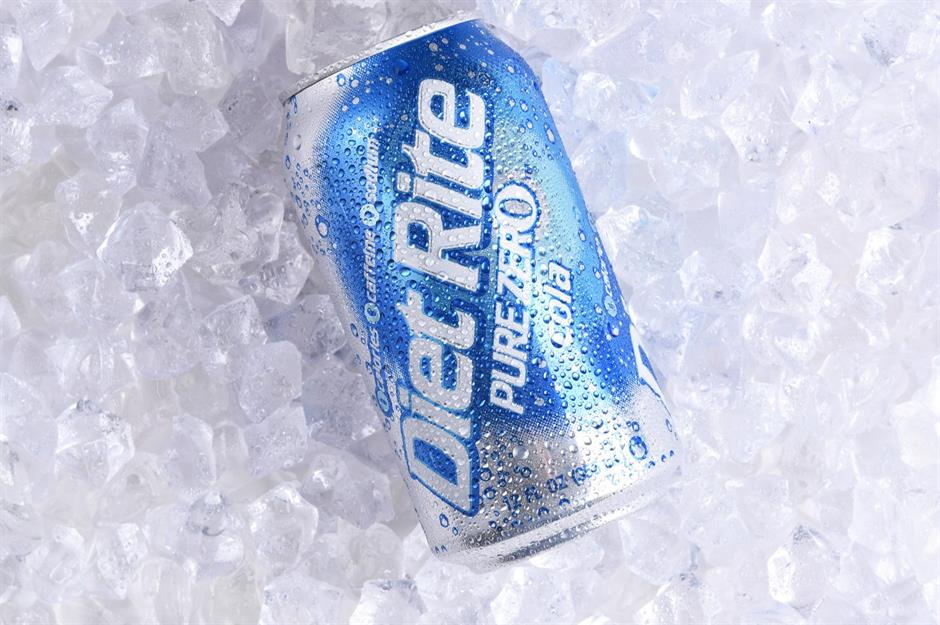
Now big business, diet soda drinks were originally created for diabetics, but became popular with health and weight-conscious drinkers in the 1950s. No-Cal Soda was the first zero-calorie soft drink and came in six flavors, with black cherry being the biggest seller. Other brands such as Glamor (1954) and Diet Rite (1958) followed suit.
1950s: fast food
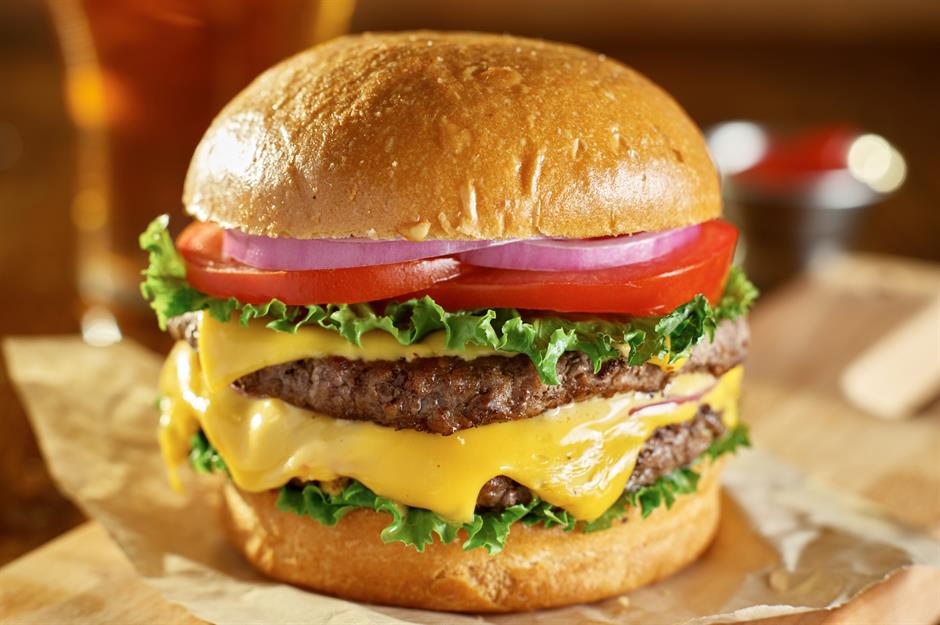
Fast food of some kind has existed for more than a century, but 1950s America put mass-produced, flavor rich, and nutritionally poor fast food on the culinary map. This was the decade that quick-service restaurant chains began to open and franchise. For example, KFC opened in 1952, Burger King in 1954, McDonald’s in 1955, and Pizza Hut in 1958.
1950s: tinned and processed food
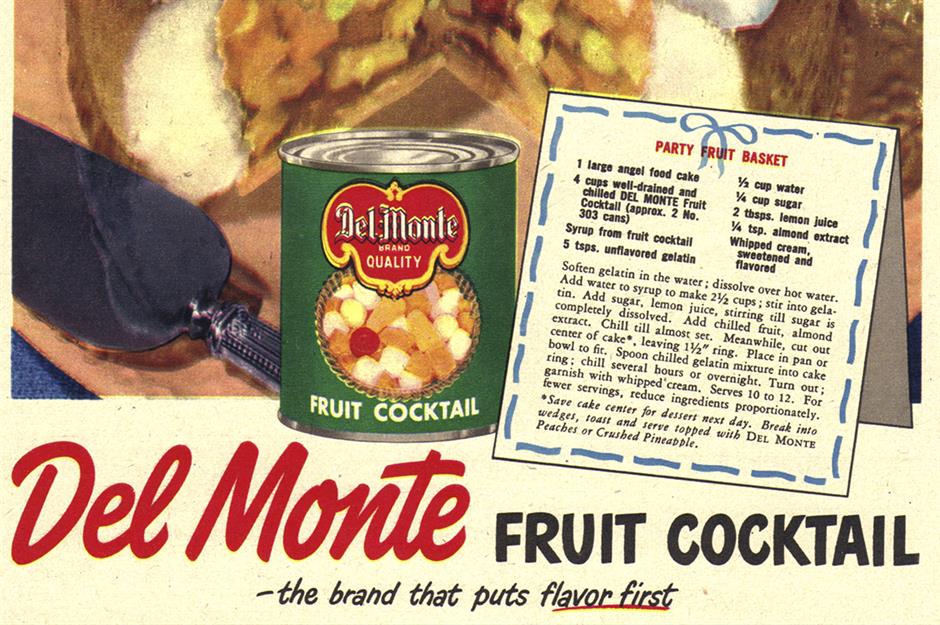
Tinned products took off after the Second World War as people wanted affordable, hardy, easy-to-prepare foods. Del Monte Fruit Cocktail was particularly popular in this decade – it featured in numerous pudding recipes including 'rainbow pudding' and 'party fruit basket' (pictured), where one tin can be combined with ready-made sponge, custard, and cream.
1950s: peanut M&M's
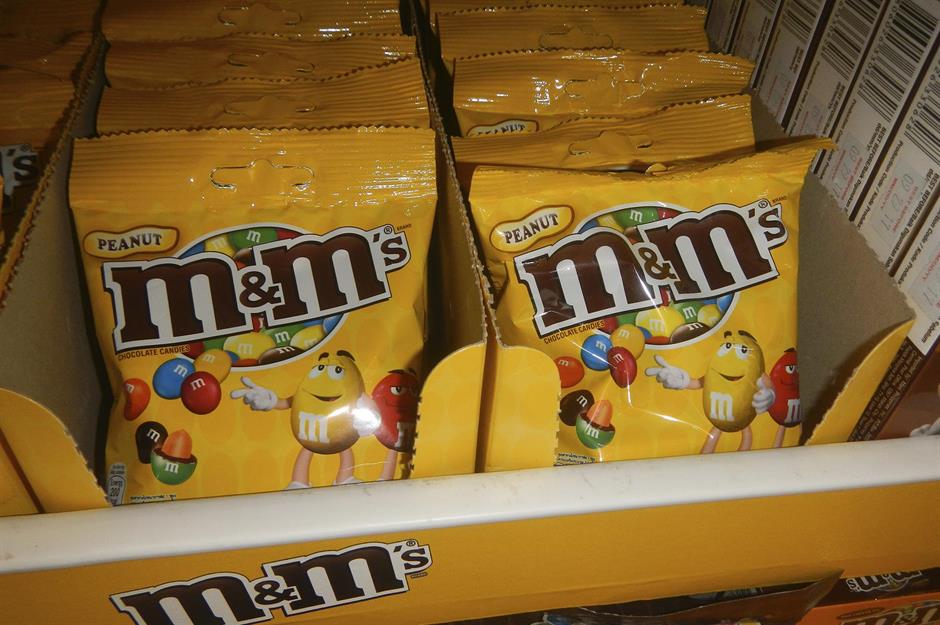
Peanut M&M's launched to a soon-adoring American public in 1954, 13 years after the chocolate version. At the time, this classic candy only came in a tan-colored shell. It wasn't until later that more rainbow colors were added.
1950s: ranch dressing
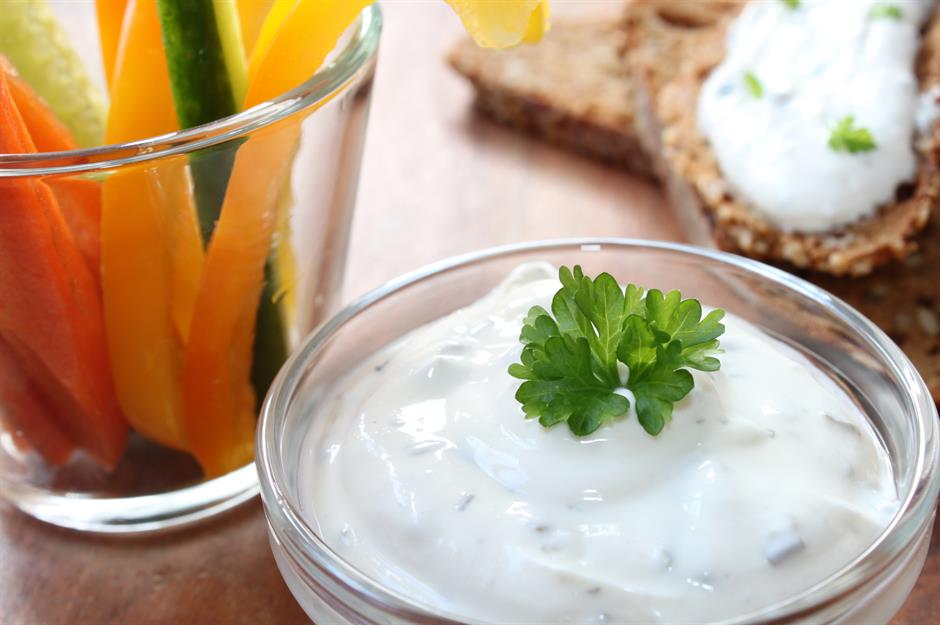
Made from buttermilk, herbs, spices, garlic and onion, this famous dressing was invented by husband-and-wife-team Steve and Gayle Henson in the early 1950s while they were working on ranches, first in Alaska, then California. Now the most popular salad dressing in the US, it's spotted accompanying everything from pizza and fries to chicken wings.
1950s: Slice 'N Bake cookie dough
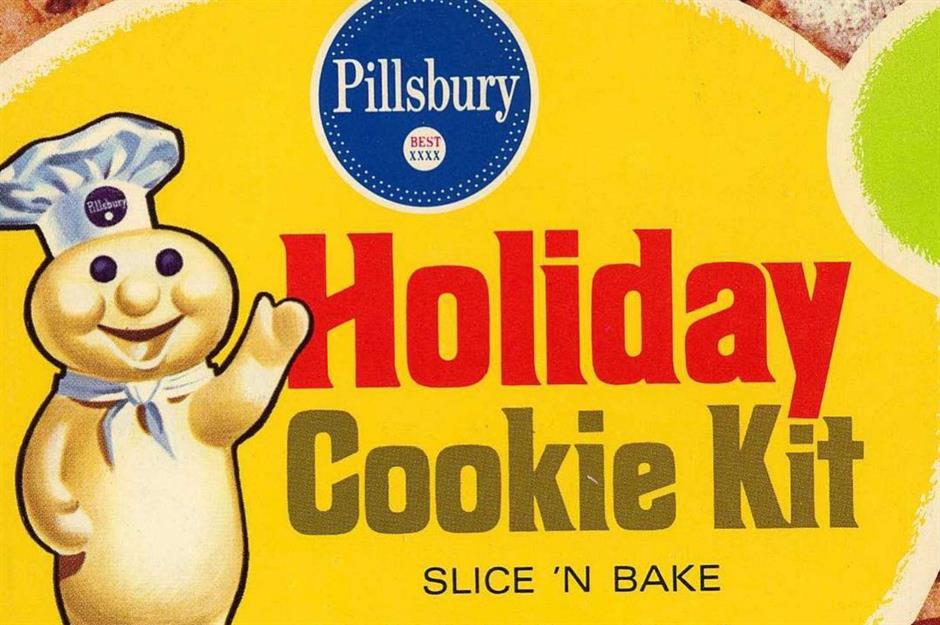
Another creation making home baking even easier was ready-made cookie dough, with Slice 'N Bake first manufactured by Pillsbury in 1957. It came in a log shape, making it easy for consumers to slice off evenly sized cookies, hence its name. Pillsbury still dominates the refrigerated biscuit market today.
1950s: Swanson TV dinners
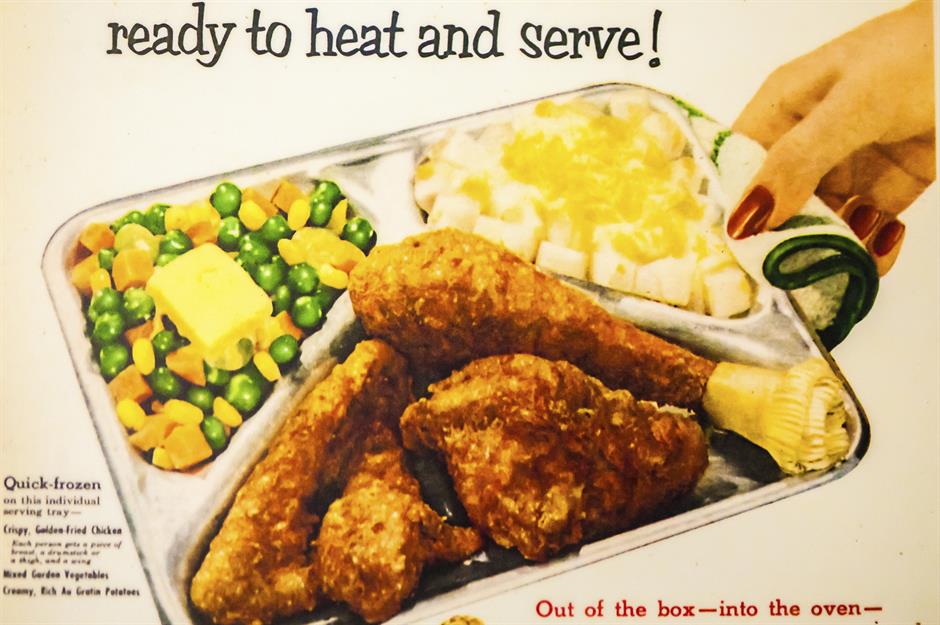
In 1954, Swanson frozen TV dinners went on sale – the brand used technology from Birdseye and packaging inspiration from plane food. Saving time on preparation and washing up, TV dinners were a hit and led to numerous ranges of ready-prepared meals.
1960s: Big Mac
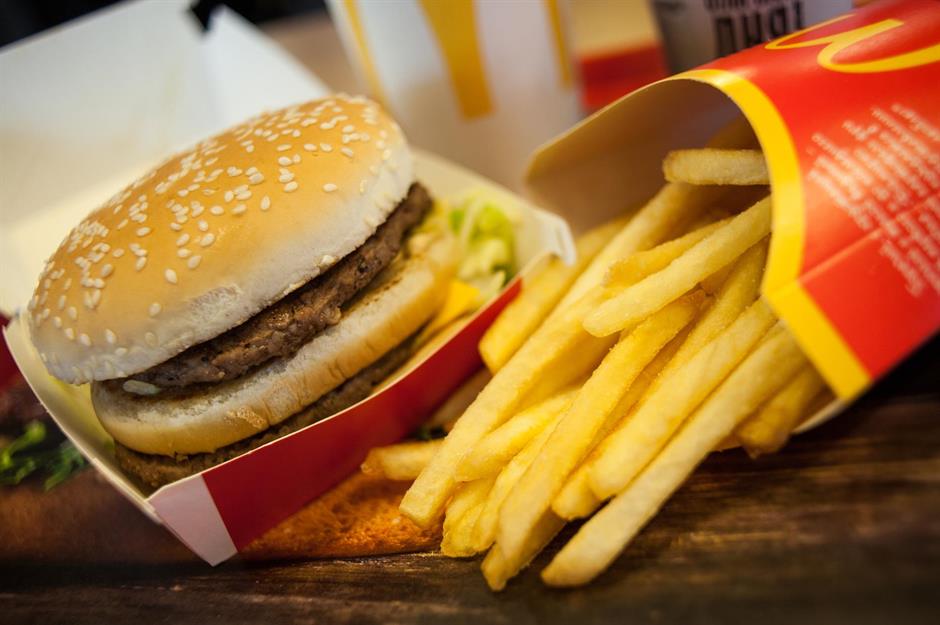
McDonald’s fast food restaurants started to appear in the US in the mid-1950s, but its most famous burger wasn't launched until 1967. The Big Mac consists of two beef patties, 'special sauce,' iceberg lettuce, American cheese, pickles, and onions, layered up in a three-part sesame seed bun.
1960s: Diet Pepsi
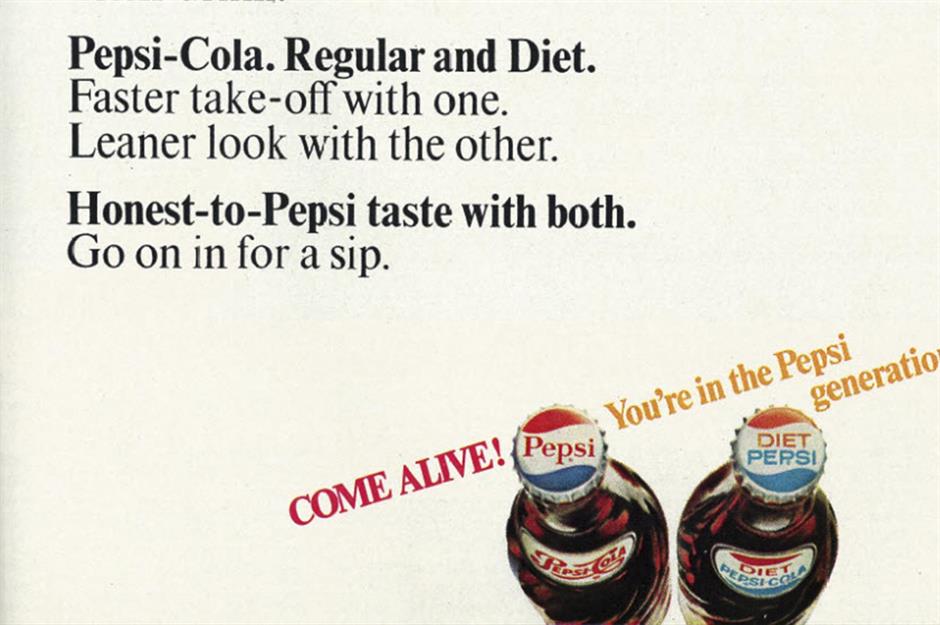
Before there was Diet Coke, there was Coca-Cola’s now-defunct Tab. And to rival Tab, there was Diet Pepsi. The sugar-free soda became available in 1964 and is still sold worldwide. It faced criticism in 2015, though, when the controversial sweetener aspartame was replaced with sucralose, and many fans said the taste changed.
1960s: chocolate fondue
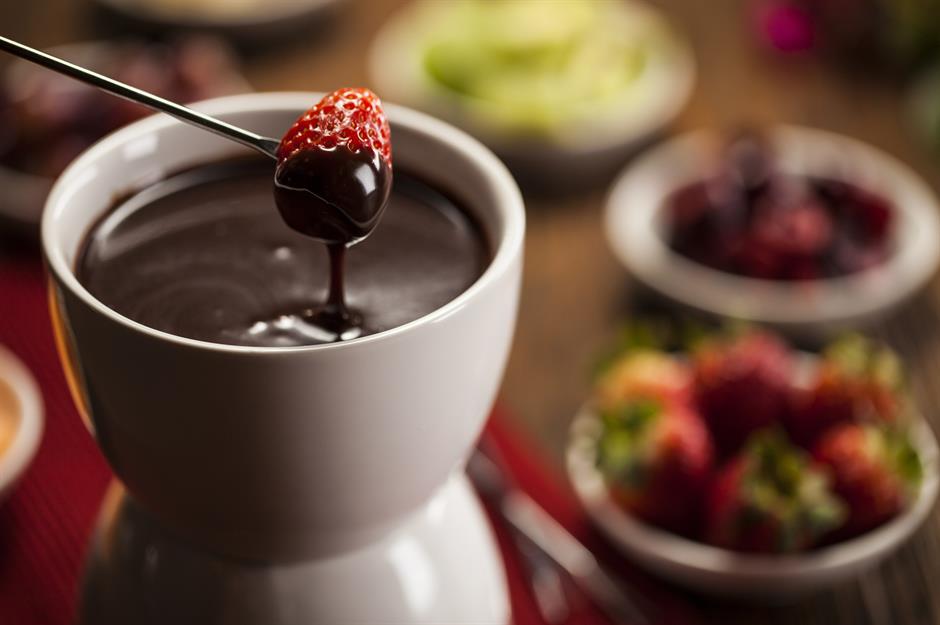
Cheese fondue was invented in Switzerland; however, we have Swiss restaurateur Konrad Egli to thank for the chocolate version, which was created in New York City in the 1960s as a promotion for Toblerone. The original recipe was melted heavy cream, kirsch, and Toblerone, with bits of cake and fruit presented around it for dipping. These days, strawberries, bananas, and marshmallows, served with a sauce of regular milk chocolate, are preferred.
1960s: Buffalo wings

The finer details of how this finger-licking chicken dish came to be are disputed, though most people believe it was conceived at the Anchor Bar in Buffalo, New York in the 1960s. The fast food is so revered in the US, the nation declared July 29 to be National Chicken Wing Day.
1960s: Gatorade
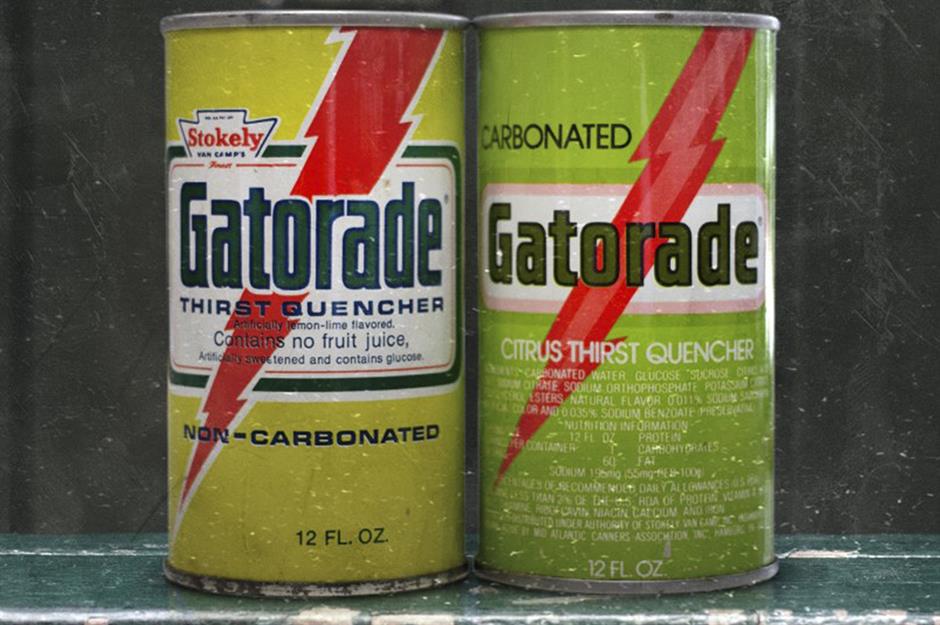
Now, here’s an interesting fact: Gatorade, the sports drink formulated in 1965, was named after the Florida Gators, the sports teams that represent the University of Florida. Today, it's one of the leading brands and is often credited as the first-ever sports drink in the US.
1960s: Pop Tarts
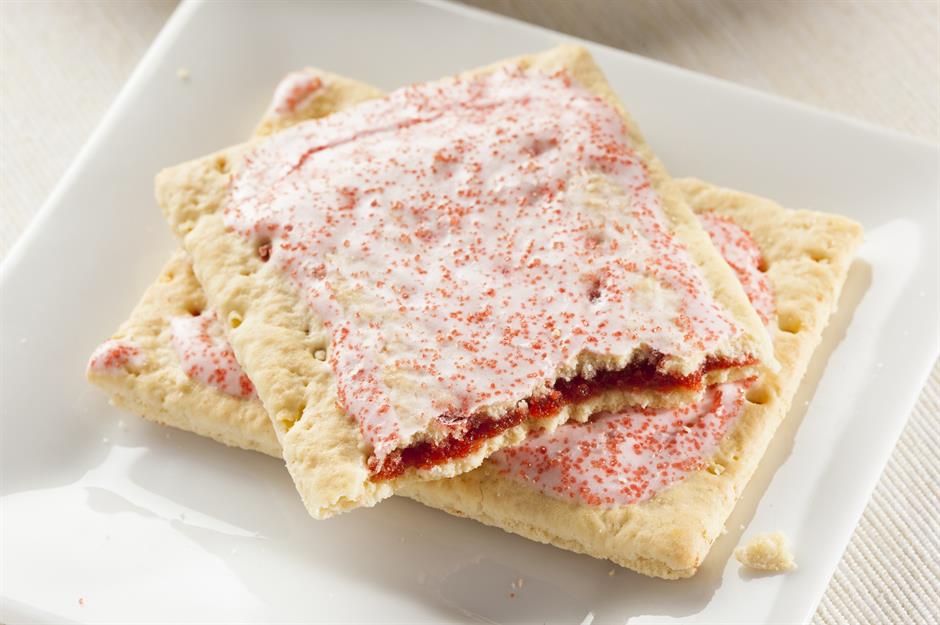
Pop Tarts are everything that’s good about convenience food: easy, tasty, and with a long shelf life. They also represent pretty much everything that’s bad about it: sugary, processed, and nutrient poor. But since Kellogg’s introduced the product in 1964, it has been a roaring success in the US and beyond.
1960s: Coffee-Mate
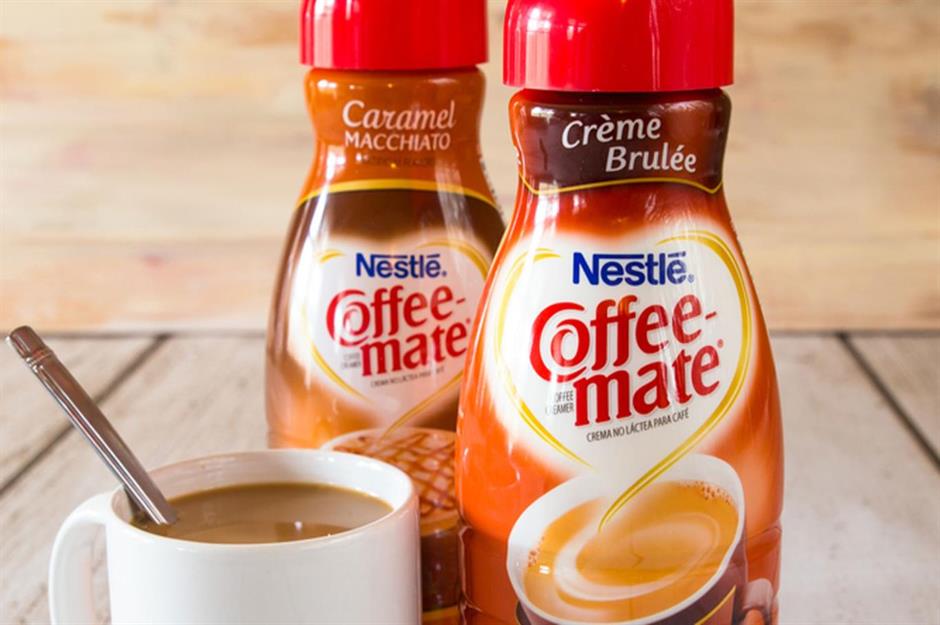
Although non-dairy creamers appeared on the American market from the early 1950s, it was Coffee-Mate – launched in 1961 – that garnered great commercial success, in part because it dissolved better in hot liquid. Benefits of Coffee-Mate include its long shelf life and its appeal to people who are lactose-intolerant. It remains the biggest selling creamer in the US.
1960s: Cool Whip
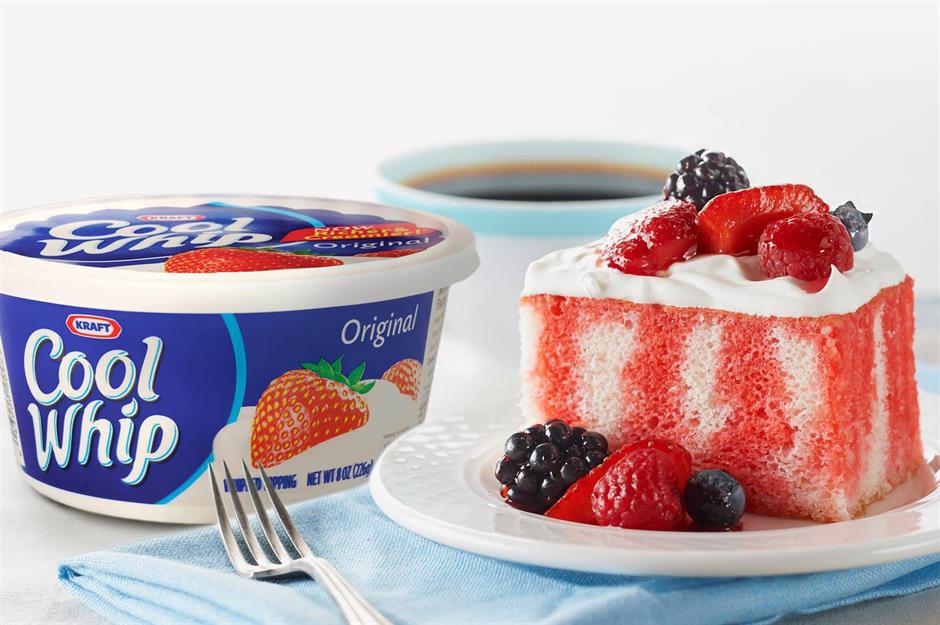
An imitation of heavy whipped cream, Cool Whip was introduced to American homes in 1966 and soon became a leading brand. It was a key ingredient in the pies and gelatine-based puddings that were hugely popular in the era.
1960s: Doritos
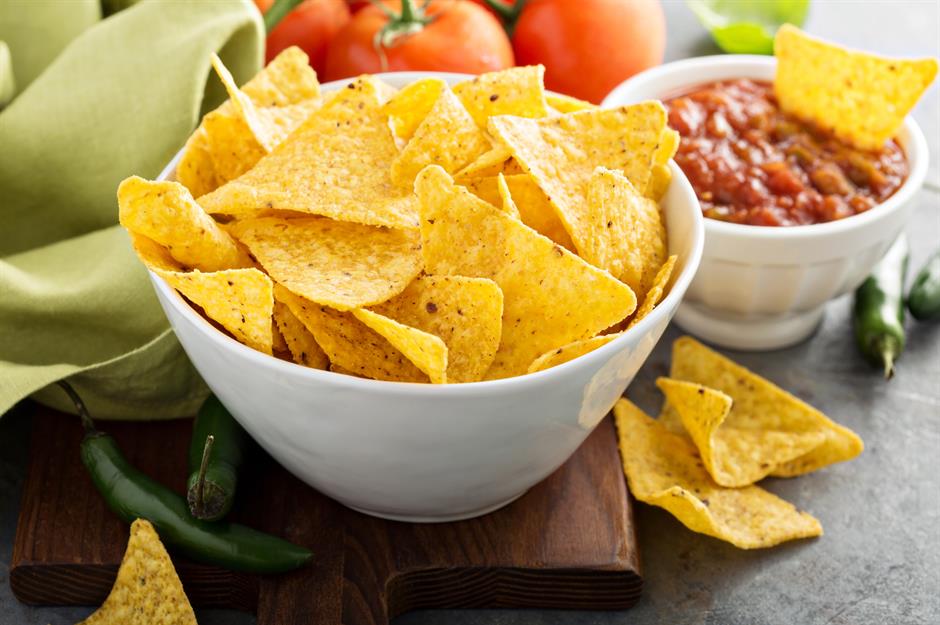
No, it’s not an urban myth – Doritos really were invented at a Mexican-style restaurant in Disneyland. The seasoned snacks were such a hit with customers that they were produced commercially for the local market. Their popularity continued to grow, and Doritos were rolled out nationwide in 1966.
1960s: surf and turf
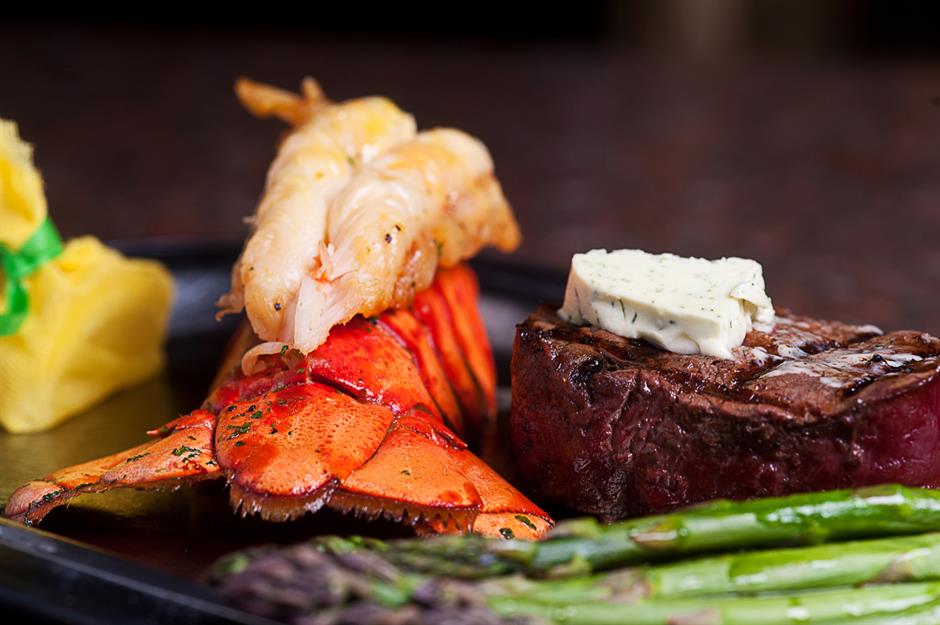
This indulgent main course of seafood and red meat came about in the 1960s and was – and still is – incredibly popular. Lobster tail and beef tenderloin is a particularly luxurious version of the dish. Another variant is the surf and turf burger, which features a beef patty topped with lobster meat.
1960s: French food
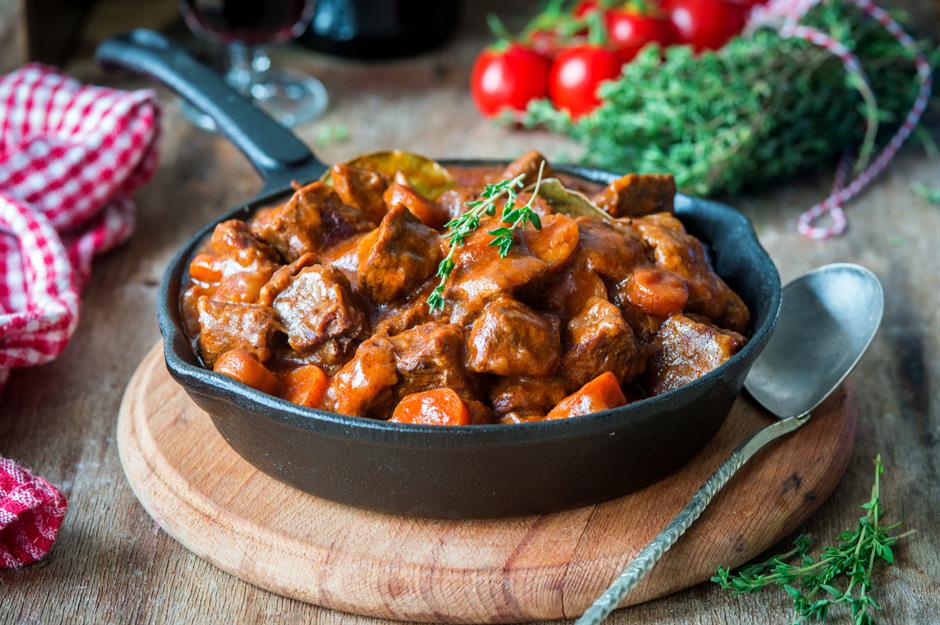
When Mastering the Art of French Cooking, by chef and author Julia Child, was published in 1961, it became a runaway bestseller. Americans embraced all things Gallic and dishes such beef bourguignon – beef stew made with red wine, beef stock, carrots, onions, garlic, bouquet garni, pearl onions, mushrooms, and bacon – became super popular. Today, French cuisine remains the epitome of fine dining.
1960s: slushy soft drinks
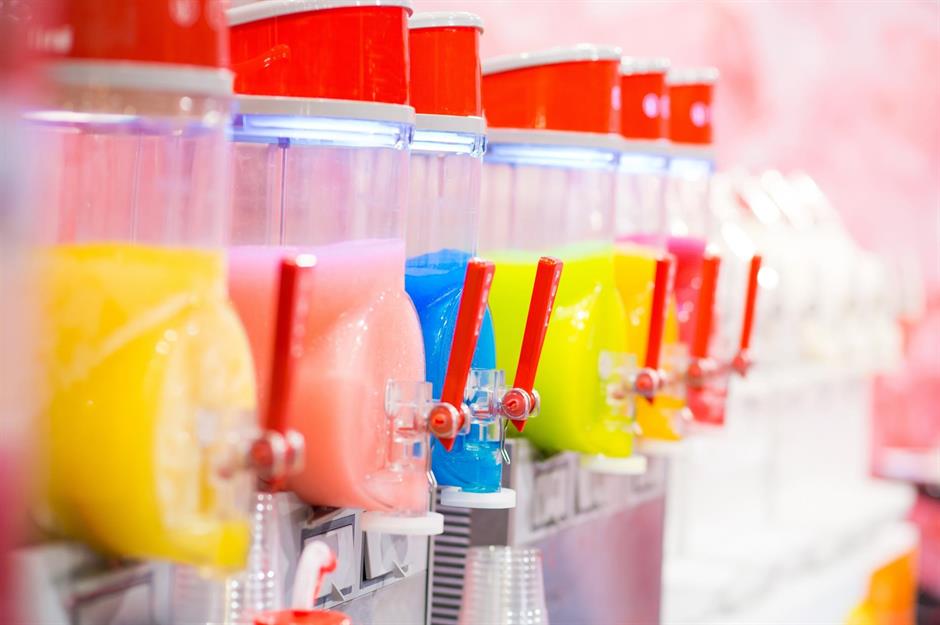
For many kids, the long, hot summers of childhood were filled with ICEEs, Slurpees, and Slush Puppies. But these garishly colored beverages, responsible for giving brain freeze to millions, are a relatively recent treat. Invented by Dairy Queen owner Omar Knedlik in the late 1950s, slushy drinks were a craze through the 1960s and still live on today.
1960s: Froot Loops
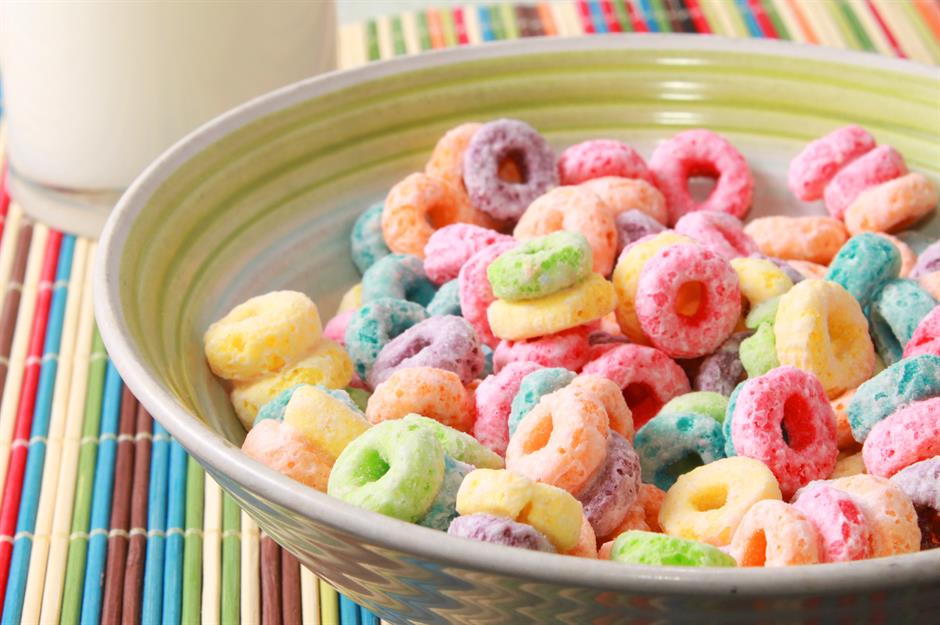
In the early 1960s, Kellogg’s released Froot Loops: brightly colored cereal rings with a fruity flavor. Initially the box only contained red, orange, and yellow pieces, but soon other colors such as blue and purple were added. However, controversially, it has been revealed that all the colors taste the same anyway.
1960s: Lucky Charms
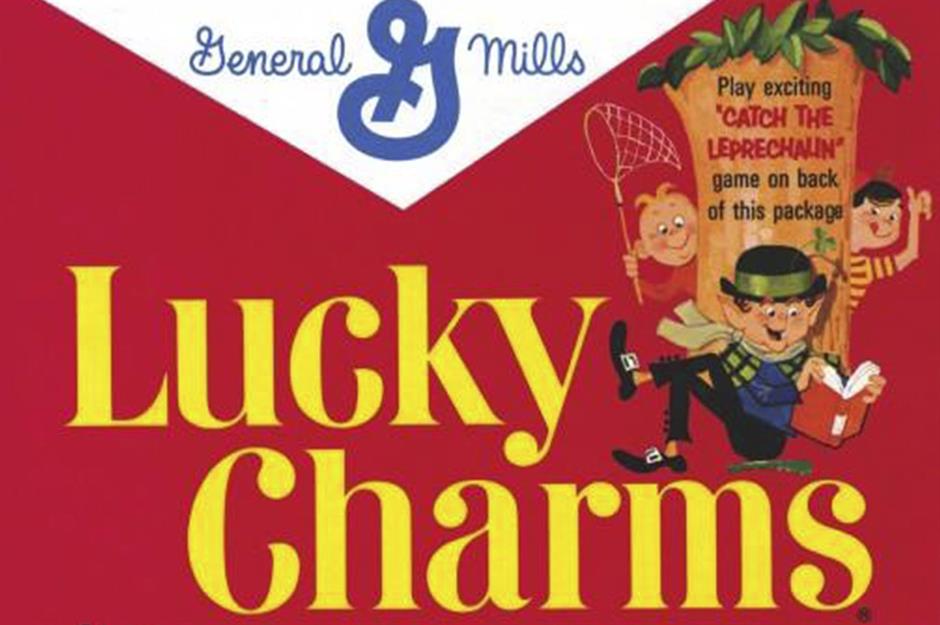
This cereal, which consists of toasted oat pieces and multi-colored marshmallow moons, stars, clover, and hearts, proved irresistible to kids when it was launched in 1964. The brand still carries Lucky, its leprechaun mascot, and he has certainly brought the brand good fortune – in 2018, it was General Mills' fastest growing cereal brand.
1960s: Pringles
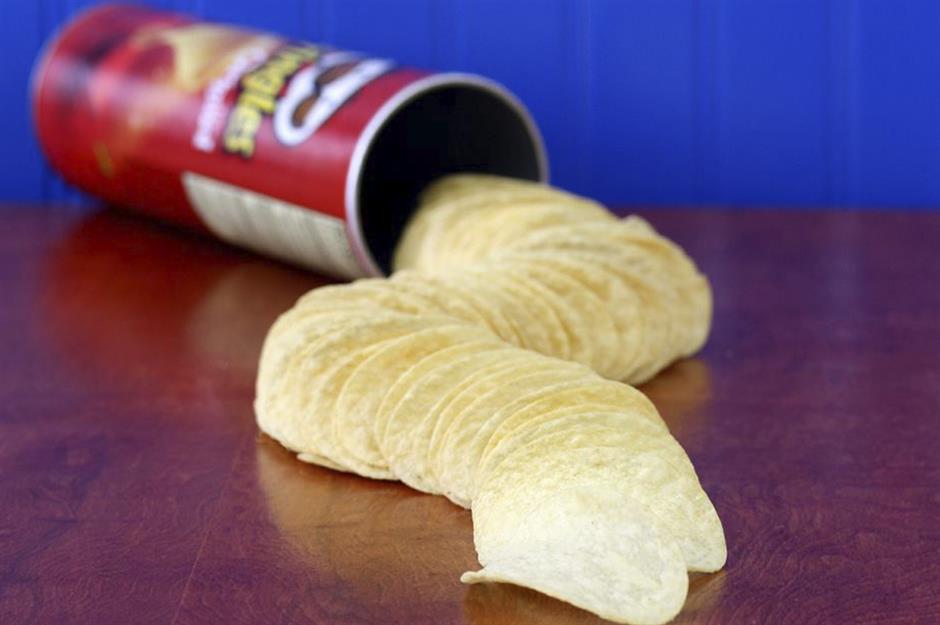
Never was a truer advertising slogan created than 'once you pop you can’t stop.' These addictive potato chips were first sold in the US in 1967, and were a roaring success right from the start. However, although Pringles didn’t make it overseas until 1991, two-thirds of sales are now outside of America.
1960s: Tex-Mex
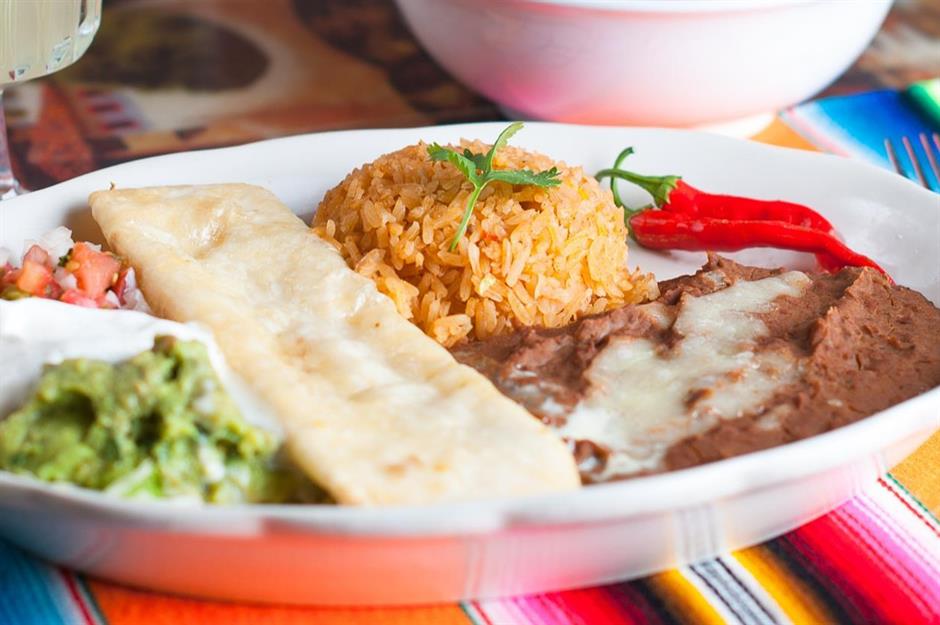
Taco Bell began serving Tex-Mex fast food to eager diners in the 1960s. Some six decades later, there are several thousand of these restaurants worldwide. Taco Bell was instrumental in popularizing this fusion cuisine and is also responsible for creating the pre-formed, hard taco shell that’s ubiquitous today.
1960s: Domino's
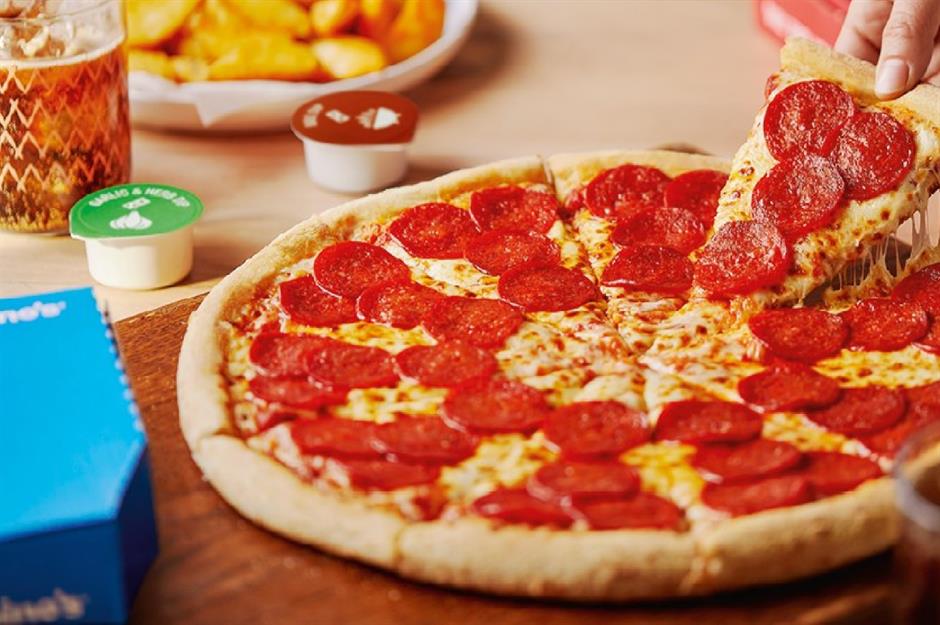
Domino’s was founded in Michigan in 1960, and has become the largest pizza delivery chain on the planet, thanks to the world’s insatiable appetite for this classic combination of dough, tomato, cheese, and all manner of delicious toppings. The classic pepperoni pie (pictured) is the chain's most popular offering.
1970s: Hamburger Helper
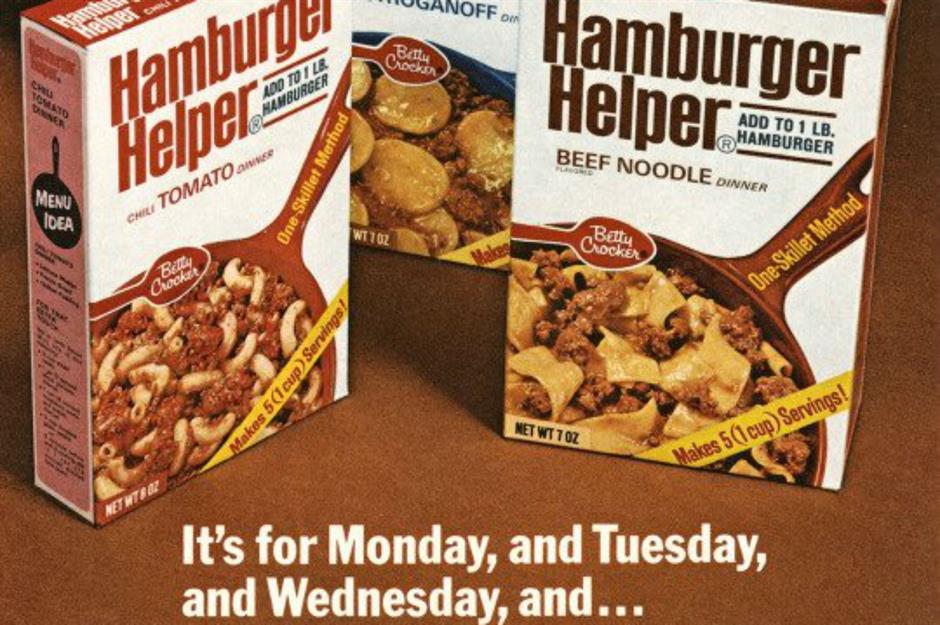
Hamburger Helper launched in the States in 1971. The packaged powdered sauce and pasta product – which comes from the queen of convenience brands, Betty Crocker – can be cooked with ground beef to create simple, quick meals. Its popularity is such that there have been several spin-offs, including Tuna Helper and Chicken Helper.
1970s: Cup Noodles
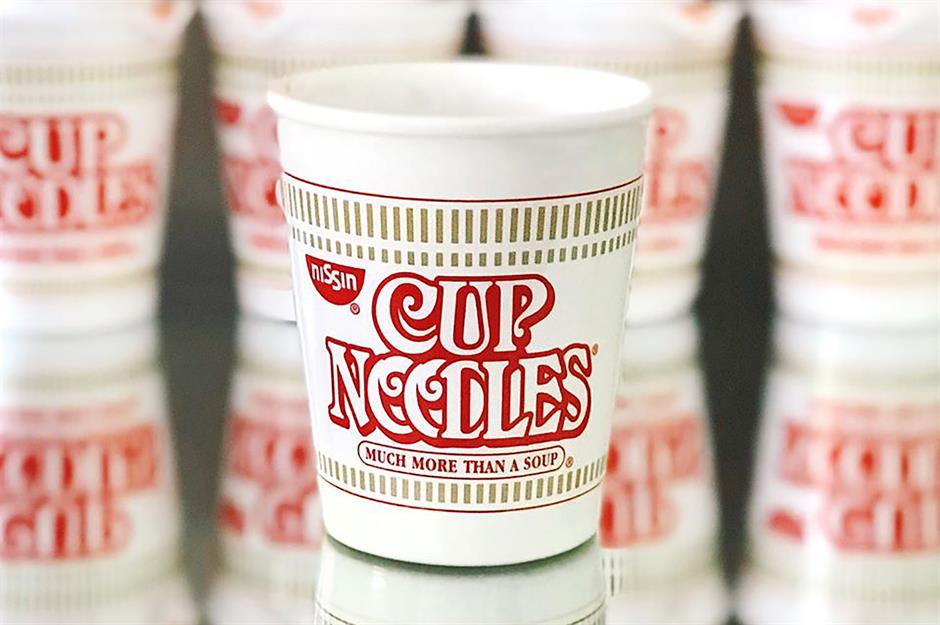
The instant ramen snack in a foam cup was invented in Japan, and was launched in the US by Nissin foods in 1971. Since then, Cup Noodles have become indispensable, affordable, and satisfying snacks. Today, Cup Noodles are healthier than they were originally, with no artificial flavors or MSG, and less salt.
1970s: Black Forest gâteau
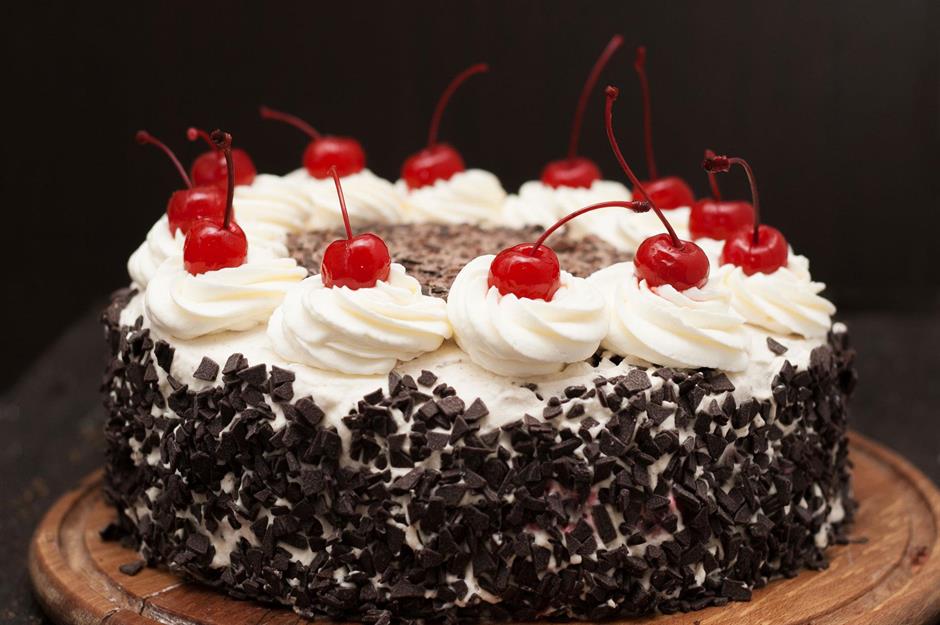
Black Forest gâteau, or Black Forest cake, was regularly brought out as the show-stopping dessert in the 1970s. Made from layers of rich chocolate and cream and doused in boozy Kirsch with cherries studded throughout, it hails from early 20th-century Germany, though has become synonymous with the decadent desserts of the dinner party decade.
1970s: Hawaiian cuisine
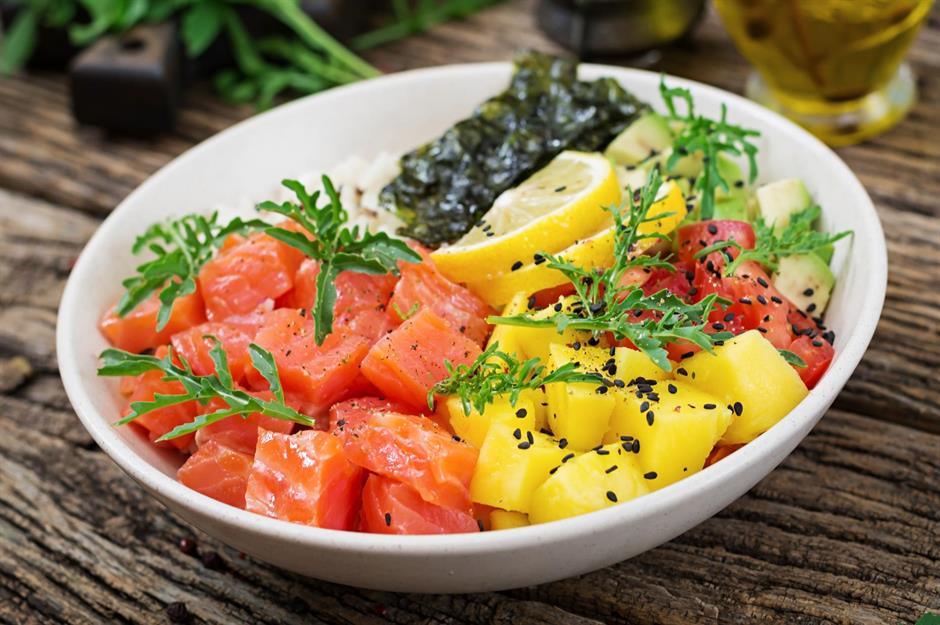
As more Americans traveled to Hawaii on package vacations, the islands' culture was embraced and copied back home. In the 1970s, food magazine Bon Appétit featured a plethora of Hawaiian recipes, including the then-exotic chicken baked in pineapple. The raw fish salad poke became popular around this time, too – and is back in fashion today, with poke bowls widely available across the country.
1970s: Perrier water
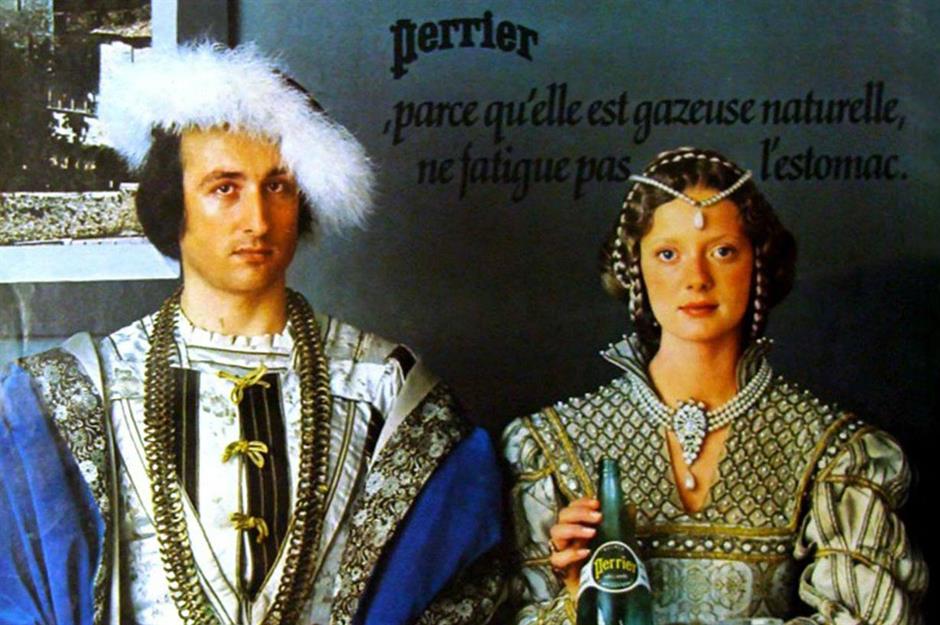
Drawn from a spring in Southern France, Perrier water was introduced to the US in the mid-1970s. The green glass bottle soon became a symbol of style and upward mobility among the health-conscious American middle class. At one point, most of its sales were in the US, and it's still a widely well-regarded brand today.
1970s: California rolls
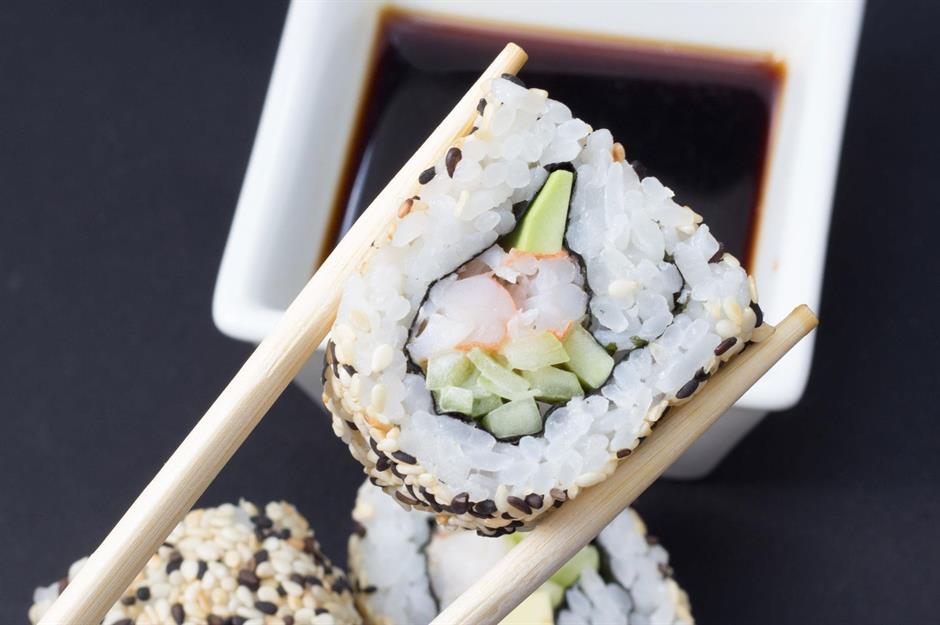
Sushi’s popularity rose in 1970s America thanks in part to the invention of California rolls, a type of maki roll that tucked the seaweed inside and included crab and avocado. Los Angeles restaurant Tokyo Kaikan is generally regarded as the home of 'American sushi,' though other chefs have also laid claim to the title.
1970s: Egg McMuffin
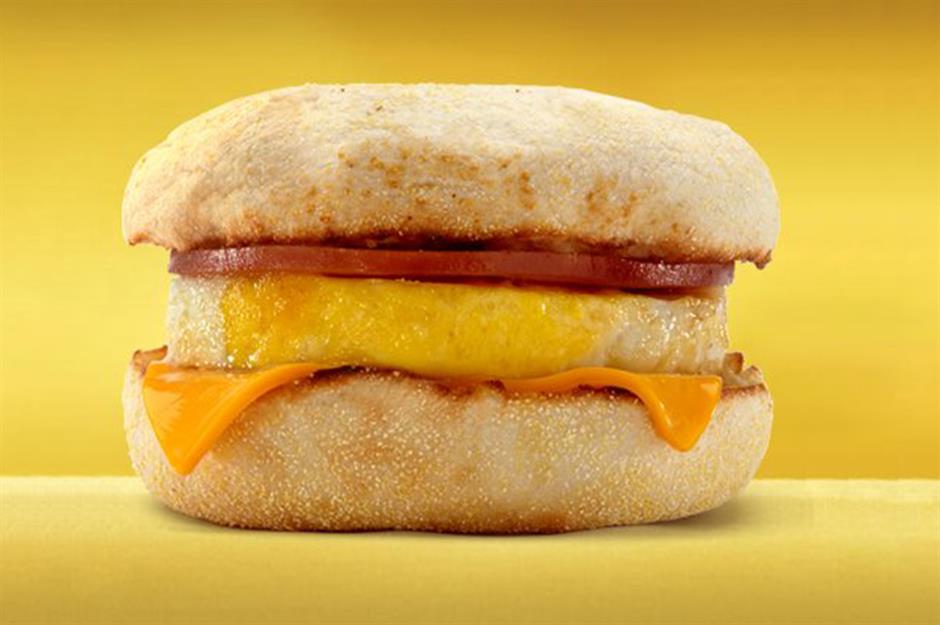
Created in 1972, the McDonald's Egg McMuffin consists of a perfectly round fried egg (cooked in a ring), a slice of bacon, and a slice of American cheese on a toasted English muffin. It quickly became a fast food classic and, as we know, still is to this day.
1970s: fajitas
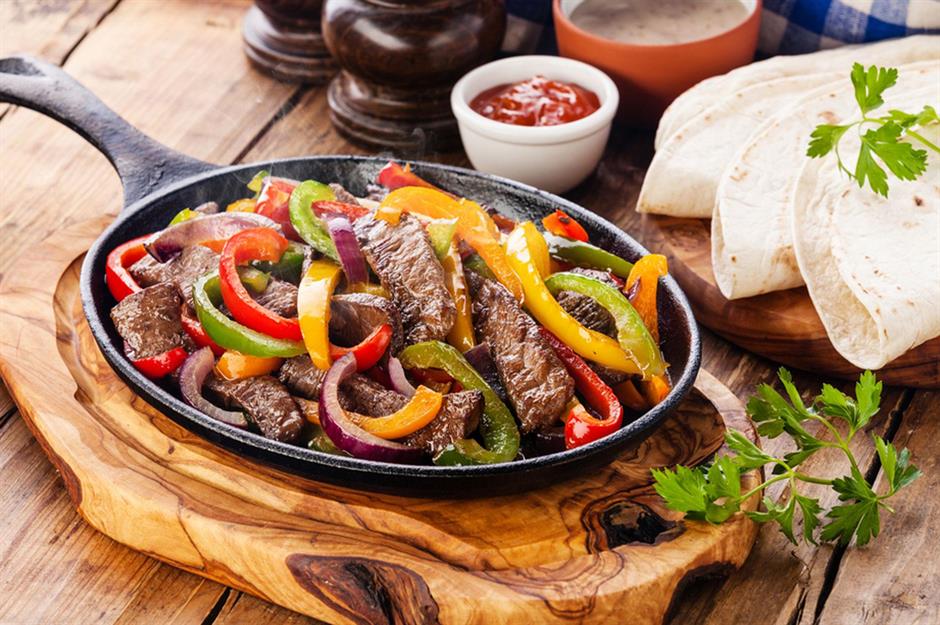
Spanish in origin, the word 'fajita' comes from the word 'strip,' which describes the marinated then grilled skirt steak pieces served with tortillas. Its beginnings are a little muddy but most likely humble – it's thought to have been a Tex-Mex meal that evolved in the 1930s on the campfires of cattle roundups, before popping up in Texas restaurants and fajita stands in the early 1970s.
1970s: cheese fondue
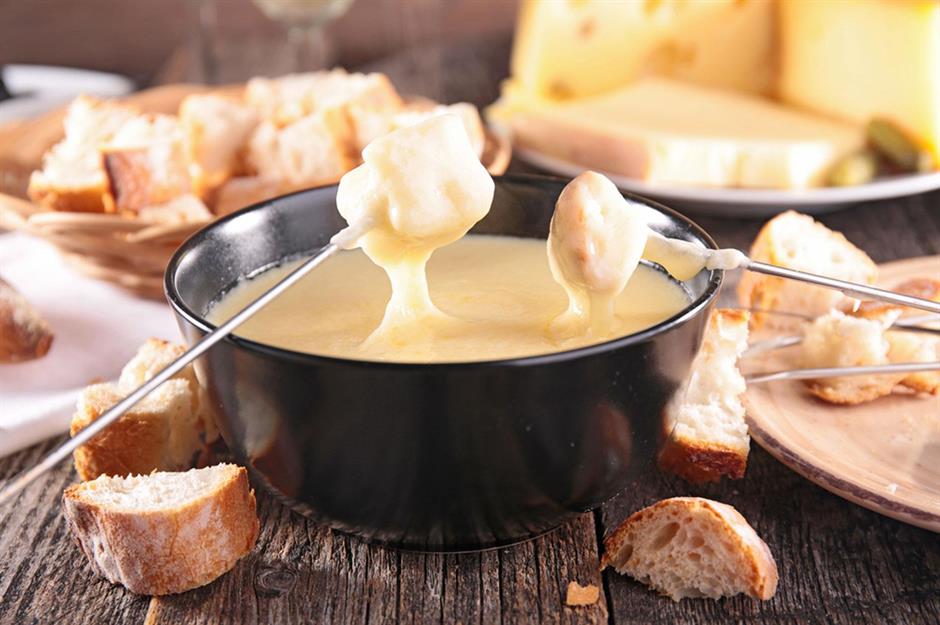
Although fondue has been around for much longer in Switzerland, this shareable, dippable dish took off elsewhere in a big way in the 1970s. A dinner party classic that's made a bit of a comeback in recent years, it involves a molten pot of cheese (typically Gruyère) and a splash of wine, served alongside pieces of bread and meat for dunking.
1970s: General Tso’s chicken
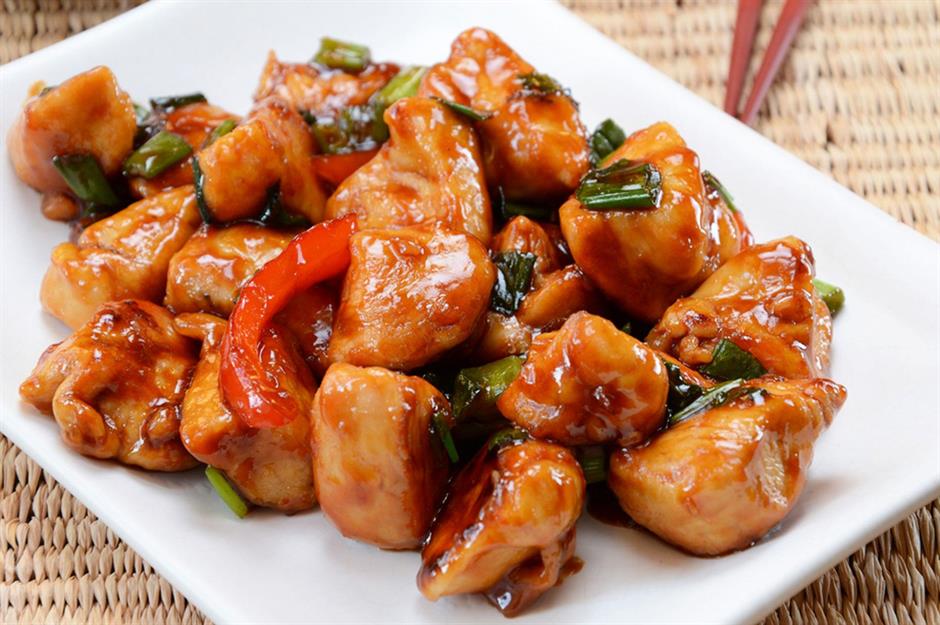
Two New York City restaurants planted their flag on this spicy chicken dish, which is named in honor of a 19th-century Chinese leader: the now-closed Peng’s Restaurant, and the nearby Shun Lee Palaces. A Chinese dish adapted to suit American tastes – it’s sweeter and the chicken is crispy coated – it became a must-try dish in the 1970s, and still appears on most traditional Chinese restaurant menus.
1970s: Happy Meals
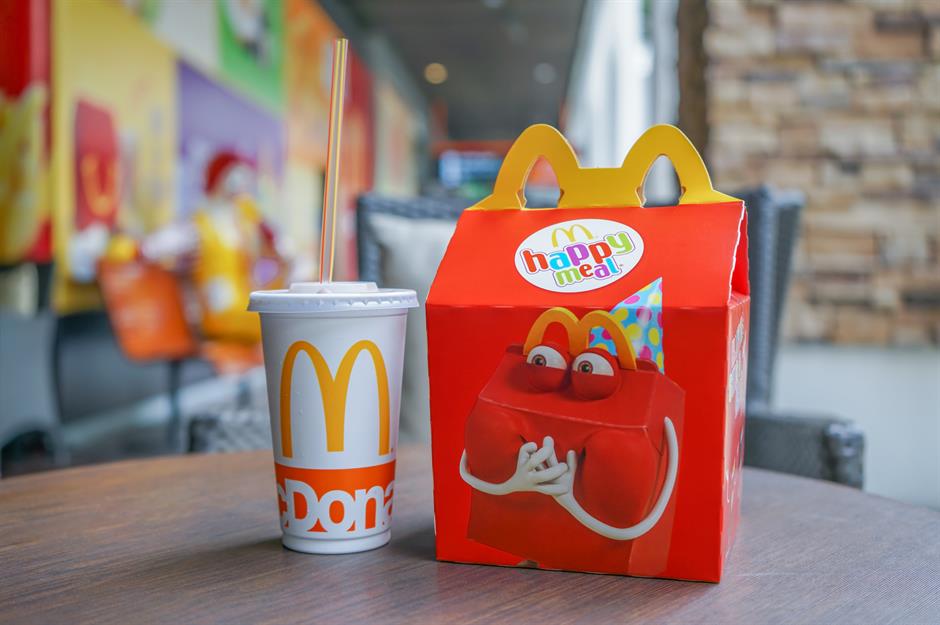
Beloved by children to this day, the McDonald's Happy Meal launched in 1979. As well as a burger, cheeseburger, or Chicken McNuggets, the brightly colored box contained small fries, a drink, and a toy. The food was secondary for most kids – usually, it was all about the toys, which are now regularly tied in with movie releases. Healthier food choices, such as bags of fruit, have now been added to the meals.
1970s: Jelly Belly jelly beans
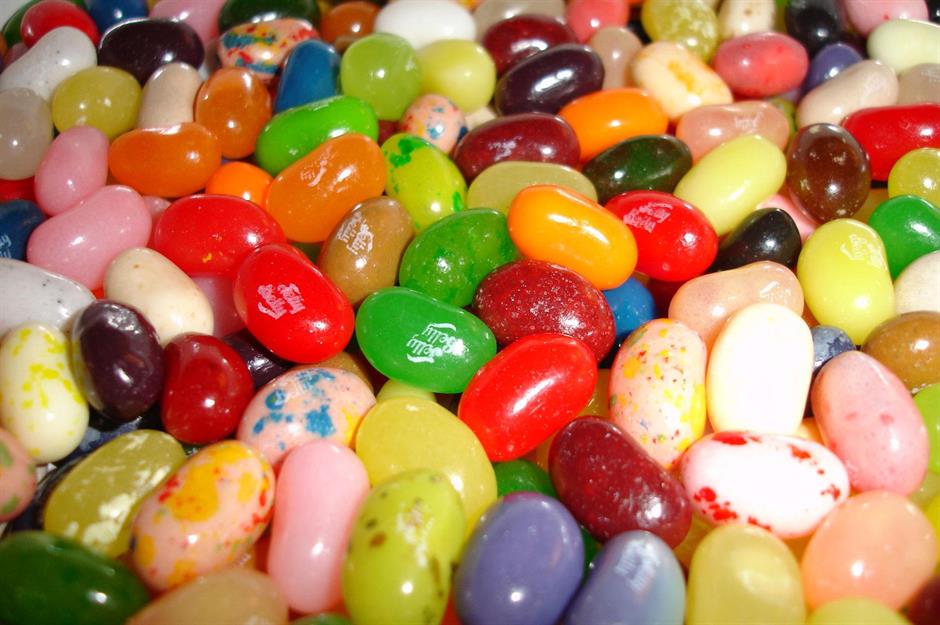
The Jelly Belly jelly beans we know and love today were first sold in California in 1976, having evolved from an earlier product. Using natural purées, the first flavors included grape, green apple, root beer, and 'very cherry.' There are now more than 50 official flavors, but the originals remain favorites for many fans.
1970s: Mississippi mud pie
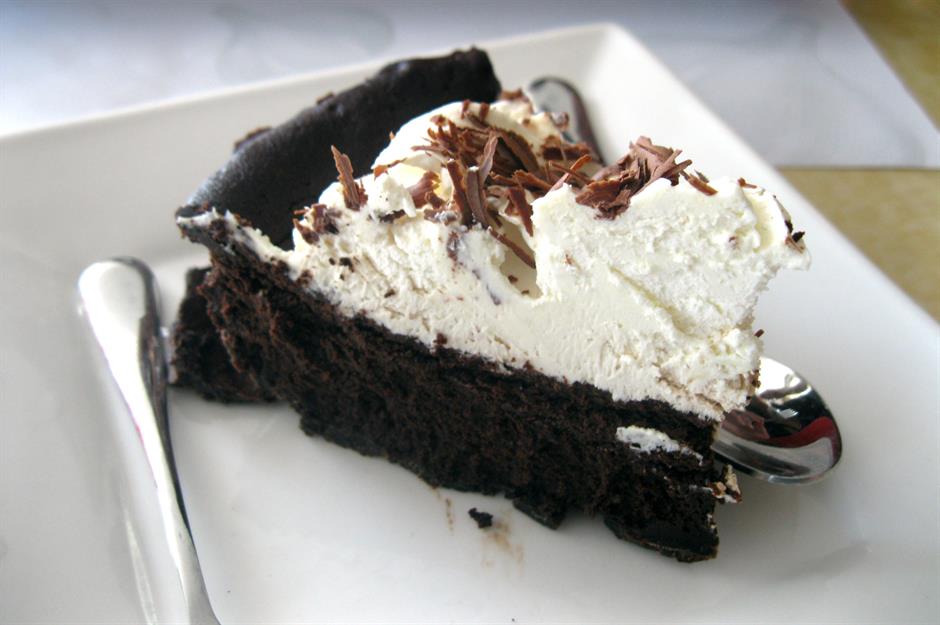
Mississippi mud pie, said to be named after the thick mud that lines the Mississippi river, first became popular in the 1970s. Crunchy yet gooey, chocolatey yet creamy, it's a layered dessert consisting of varying combinations of pudding, cake, biscuit, ice cream, whipped cream, marshmallows, and liqueur, all in a cookie-crust base.
1970s: pasta primavera
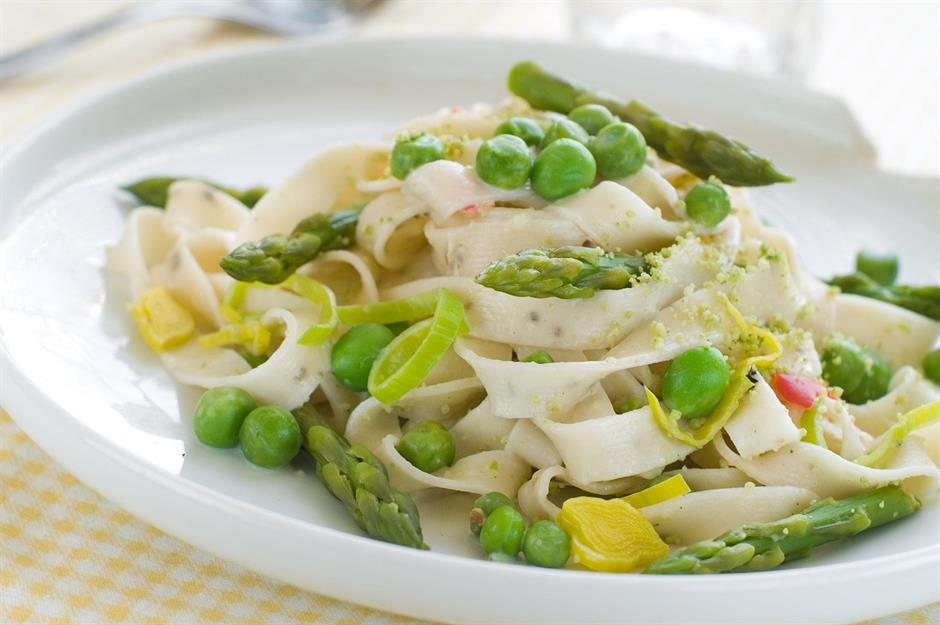
Italians have been rustling up stunning vegetarian pasta dishes for centuries, but pasta primavera is a resolutely American creation, invented by chefs at the upmarket Le Cirque restaurant in New York City in the late 1970s. It’s an explosion of greens – asparagus and peas with spinach, broad beans, broccoli, and/or zucchini – on a bed of spaghetti or tagliatelle, classically served in a creamy sauce with enriched with Parmesan.
1970s: Pop Rocks
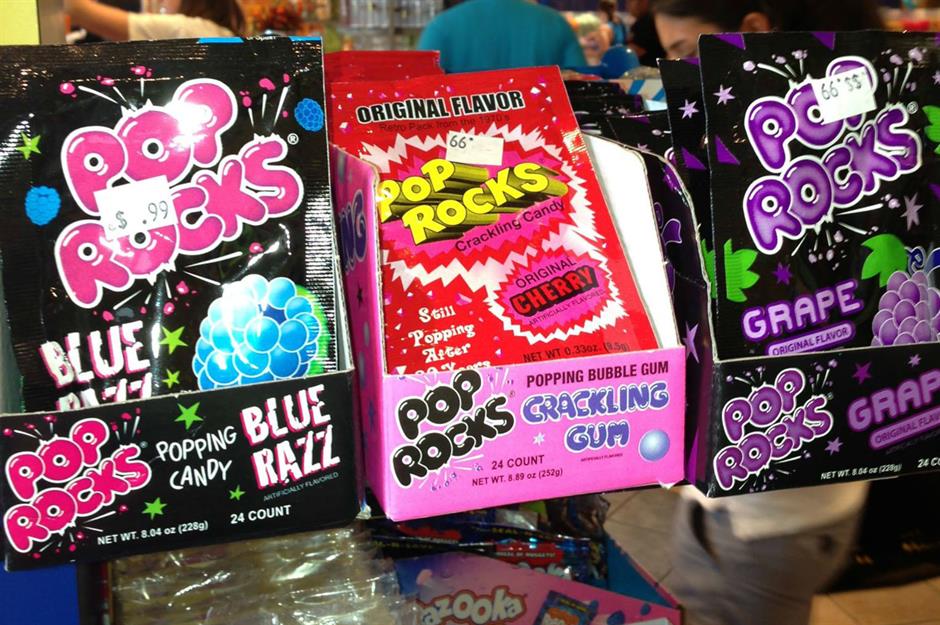
When Pop Rocks went on sale in 1975, they caused a sensation among kids who loved the tingling mouthfeel and crackling sound of the garishly colored treat (Cosmic Candy, previously called Space Dust, was a powdered version). They were wildly popular until erroneous rumors spread that eating some with soda could cause your stomach to explode. However, their appeal has resurfaced, and they have since appeared in desserts and chocolate bars.
1970s: salad bars
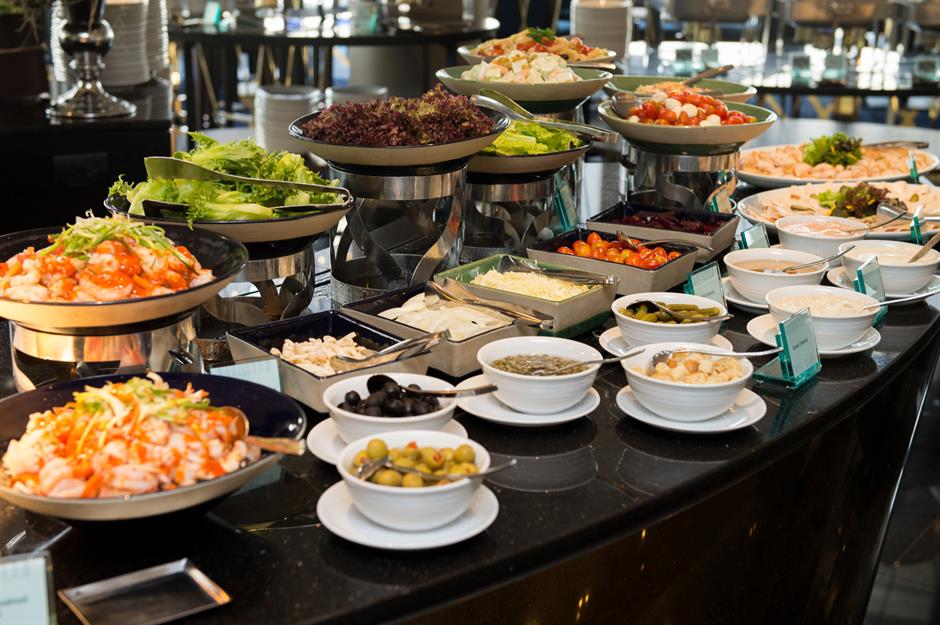
Salad bars have been around since the mid-20th century, and they live on in countless casual-dining restaurants. Though not a 1970s invention, the salad bar is most associated with this decade because it’s when they became more widely available, appearing in the likes of R J Grunts in Chicago, Illinois, and at Pizza Hut restaurants around the world.
1970s: Snapple
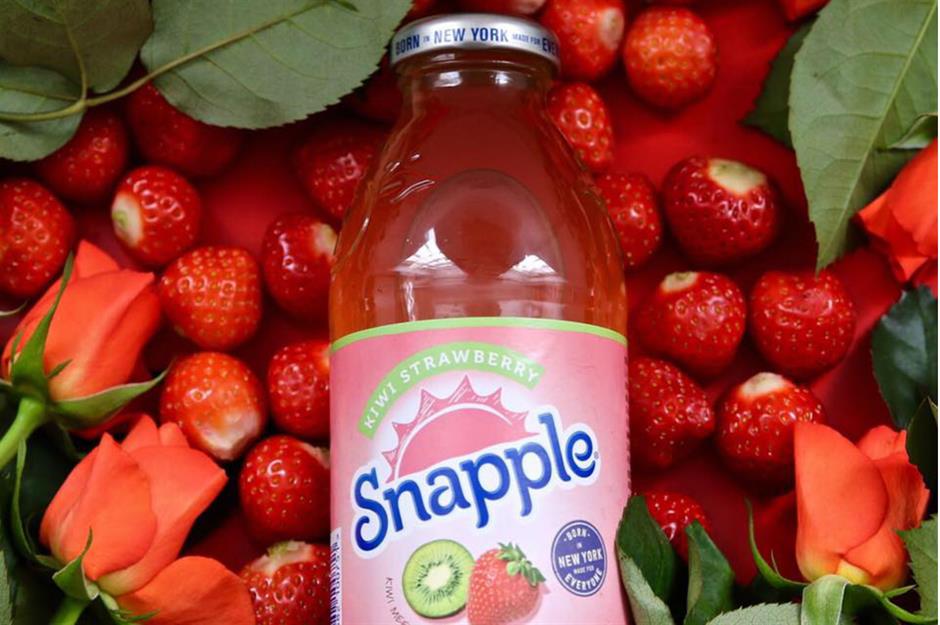
Founded in 1972, Snapple was one of the first iced tea and juice drink brands to challenge the soda industry by claiming to offer healthier beverages. Its relatively large glass bottles were another point of difference. Famous for its advertising campaigns and the fun ‘real facts’ on the inside of the bottle caps, the brand is still around today.
1970s: spaghetti bolognese
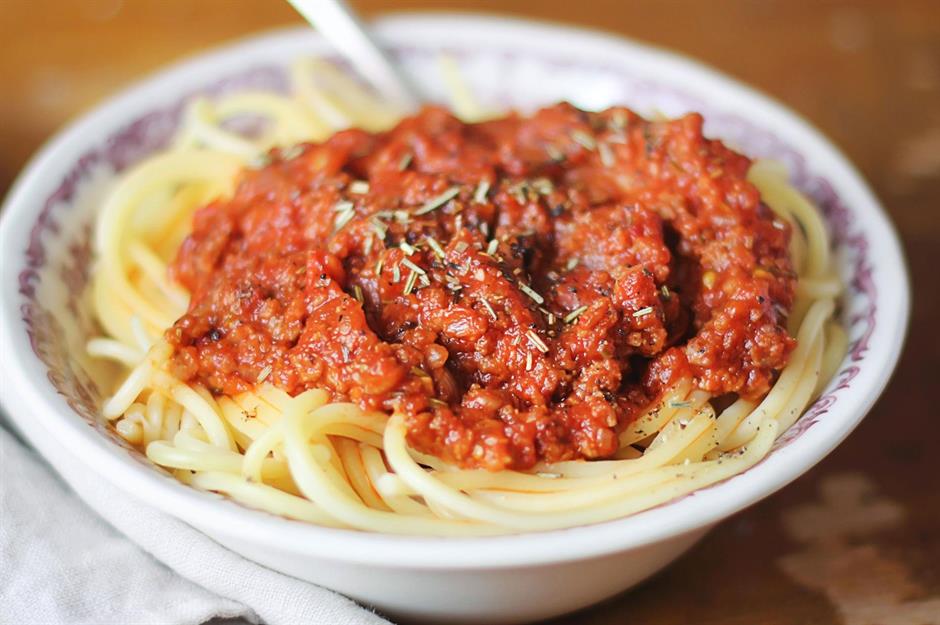
Spaghetti with sauce is instantly recognizable to any child of the 1970s (or later), who would have wolfed it down regularly. The main ingredients – ground beef, onions, and tinned tomatoes – are kitchen staples, while the addition of various veg or herbs lingering in the pantry either enhanced or spoiled it, depending on your tastes. It's different from the slow-cook Italian ragù that inspired it, but its versatility has ensured its longevity.
1970s: Watergate salad
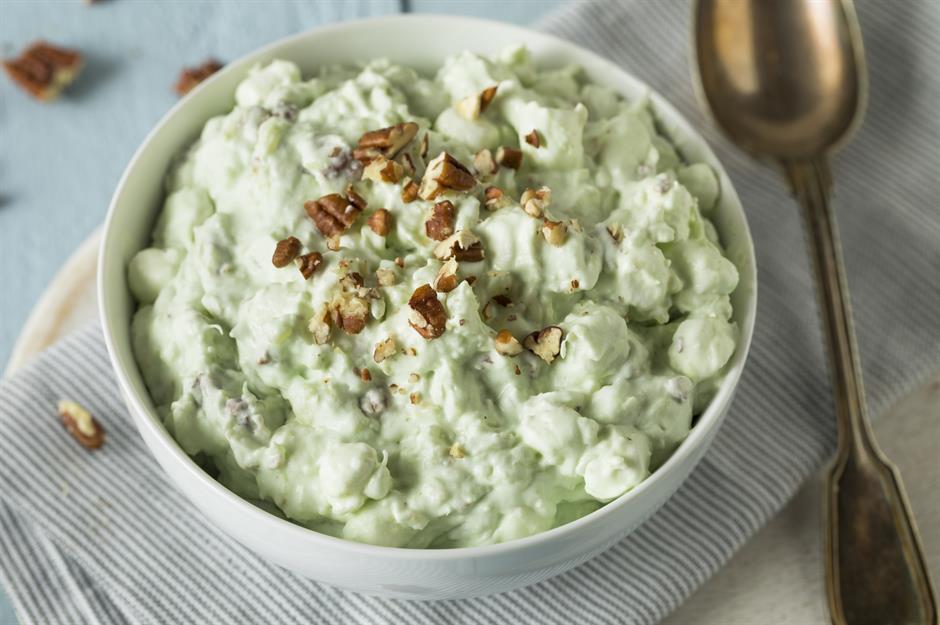
This sweet salad, made from Jell-O pistachio instant pudding, canned pineapple, nuts, whipped cream, and mini marshmallows, was the brainchild of Kraft's cookery team. It was originally named 'pistachio pineapple delight,' until a food editor allegedly renamed it with a nod to the biggest political scandal of the 1970s – and the title stuck.
1980s: Hot Pockets
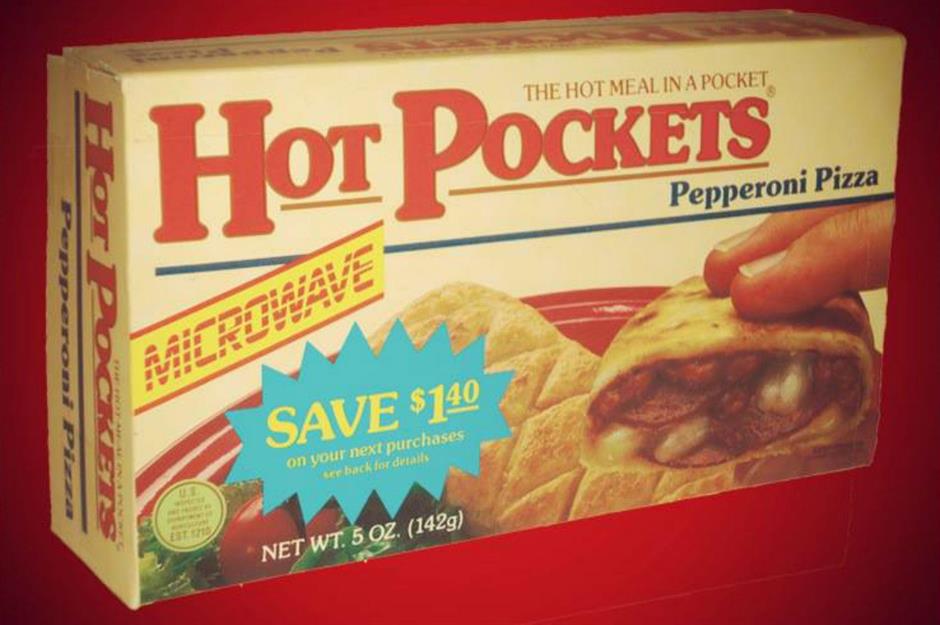
Arriving in American grocery stores in 1983, Hot Pockets are a type of microwaveable savory turnover that come in a host of flavors. Once a staple for students and those burning the candle at both ends, the snack has seen a drop in sales in recent years, but remains a guilty pleasure (and classic after-school snack) for many.
1980s: Fruit Roll-Ups
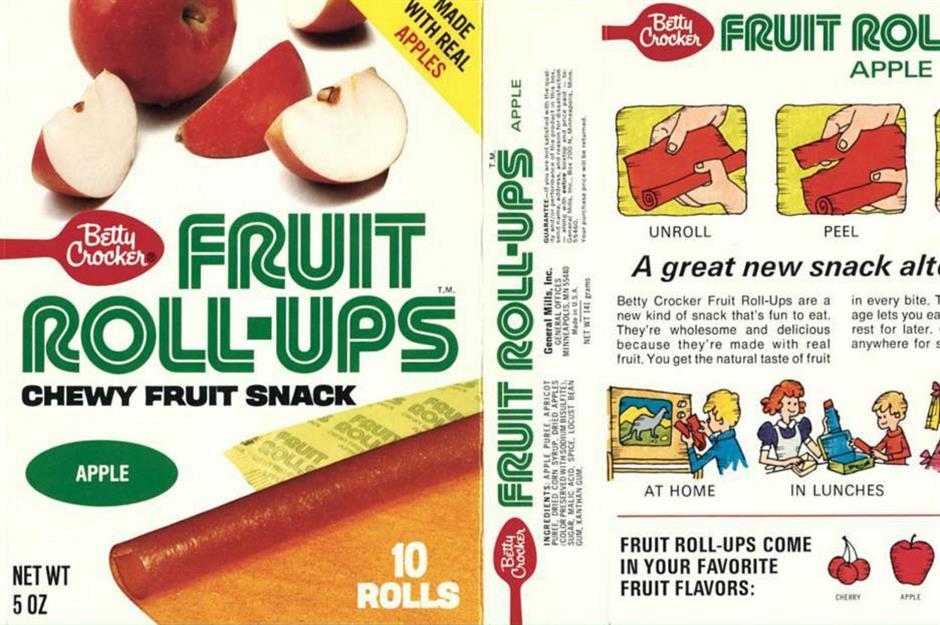
Millions will remember eating Fruit Roll-Ups as a kid in the 1980s and, of course, the jingle that chimed: 'real fruit and fun, rolled up in one.' The sticky-sweet snacks have been a favorite with kids for decades, and some packets even include tongue tattoos made from edible dye.
1980s: Squeezit
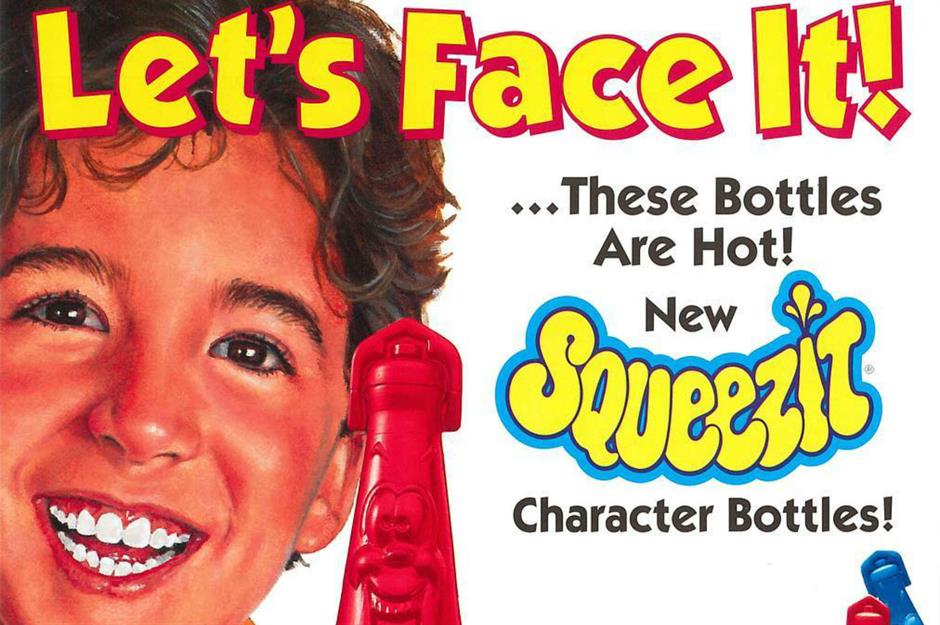
From the mid-1980s, consumers embraced this fruit-flavored juice, which had to be squeezed to be drunk. A huge hit with kids, which made it a mainstay of lunchboxes everywhere, Squeezit came in crazily named flavors such as 'Silly Billy Strawberry' and 'Chucklin’ Cherry,' and there was even a color-changing version.
1980s: sun-dried tomatoes
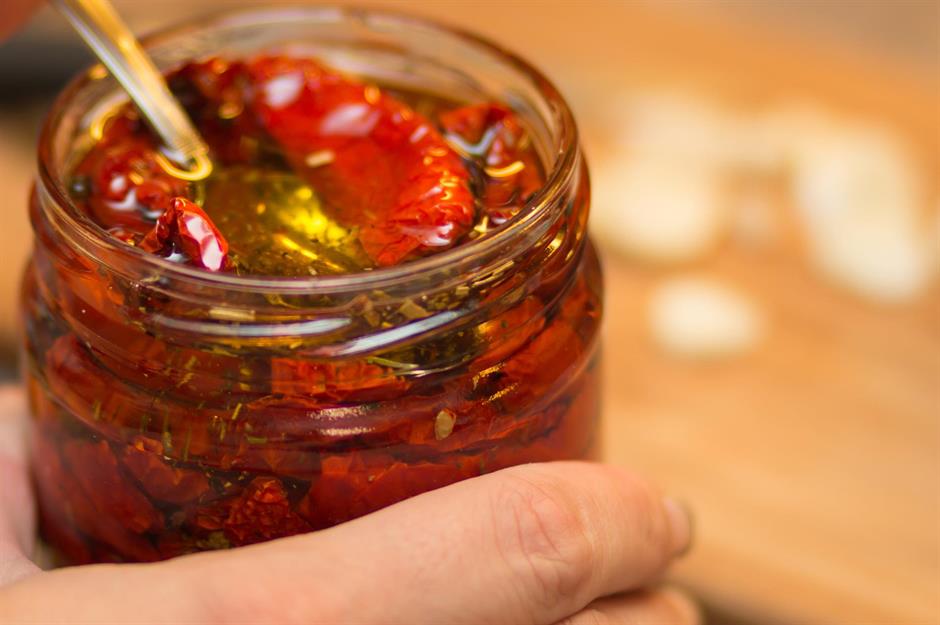
Tomatoes that had been preserved in the sun were already prevalent in Italian cuisine. But it wasn’t until the late-1980s that America discovered their intense flavor and fervently started adding them to a range of dishes. They were added to pizzas, pastas, and salads, and seen as the height of culinary chic.
1980s: Hubba Bubba
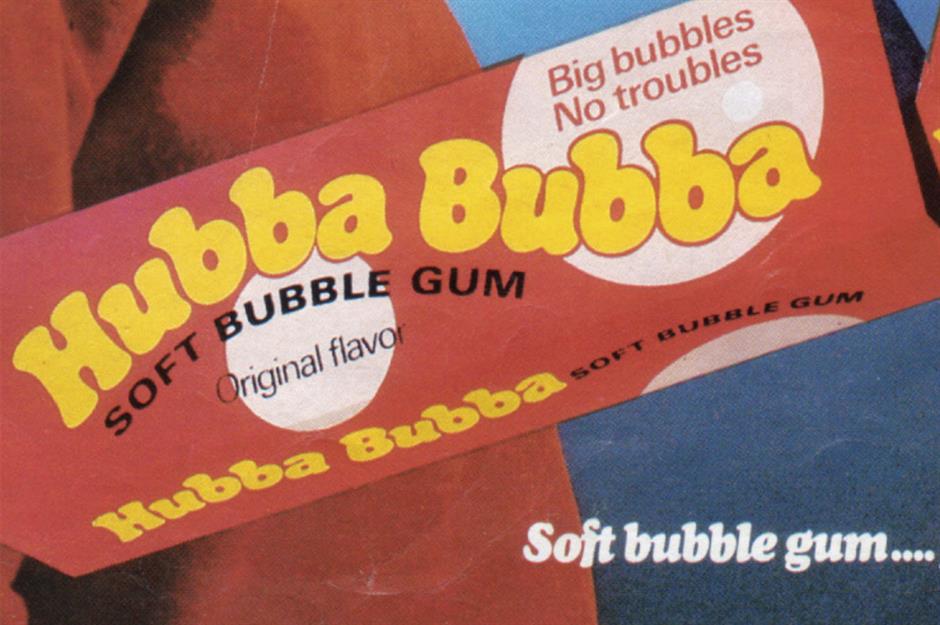
Named with a nod to the military phrase 'hubba hubba' (an exclamation of excitement or approval), this bubblegum hit US shelves in 1979. It's most associated with the 1980s, however, when the fun flavors and non-stick bubbles made it a must-have treat.
1980s: Newman’s Own salad dressing
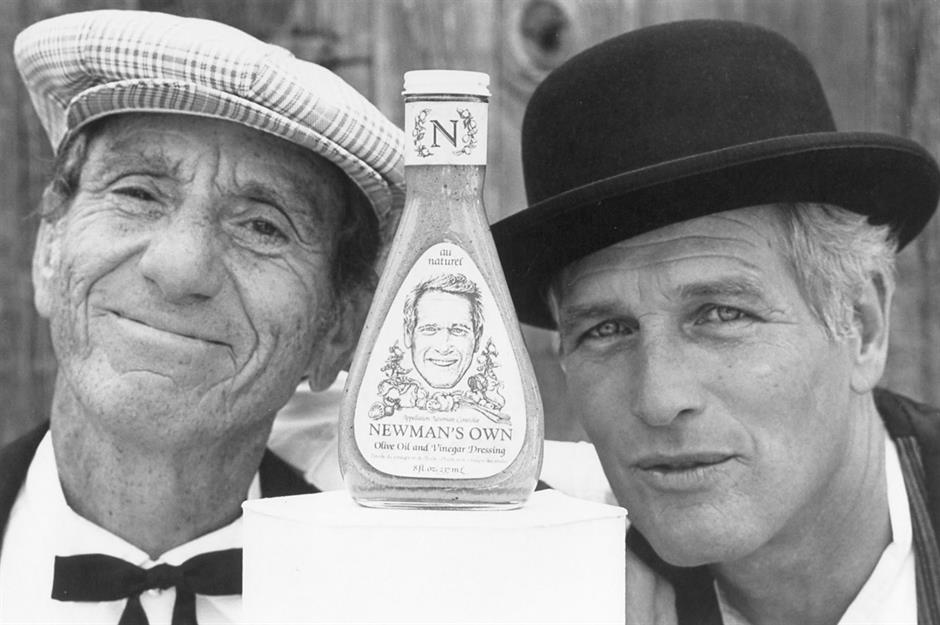
Screen legend Paul Newman had been giving out bottles of his homemade salad dressing to friends for a couple of years before the product officially launched in 1982, under the brand name Newman's Own. Pasta sauces, pizzas, microwave popcorn, salsa, and more followed, and at the actor and philanthropist’s insistence, profits are given to good causes – more than $600 million has been raised.
1980s: Seattle-style hot dog
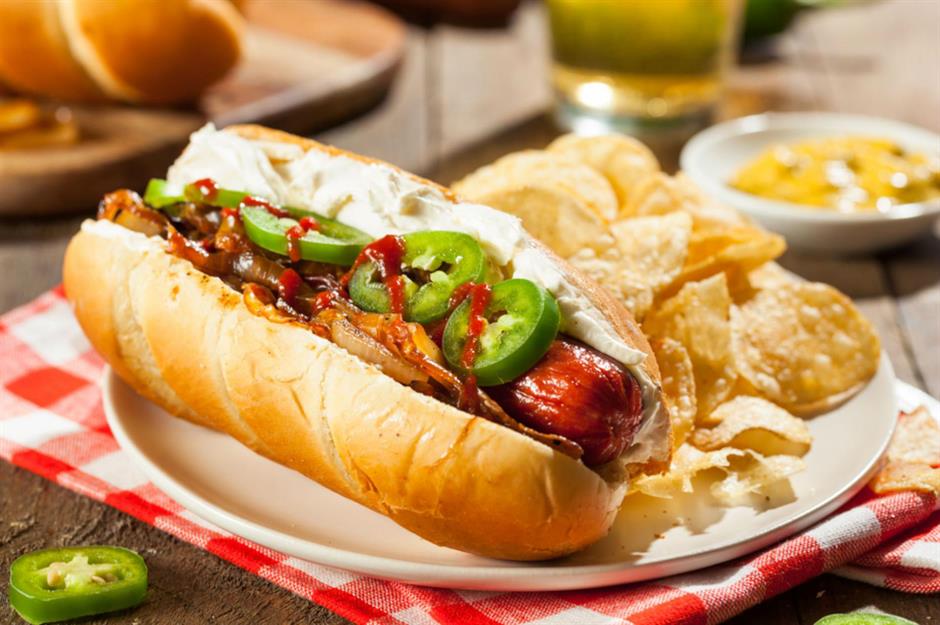
One of Seattle’s best-kept secrets, not everyone will have heard of this dog – but it’s a 1980s invention that’s been served in bars, music venues and by street vendors for years. A wiener or Polish sausage is topped with jalapeños or grilled onions, all encased in a toasted bun filled with cream cheese.
1980s: Red Bull
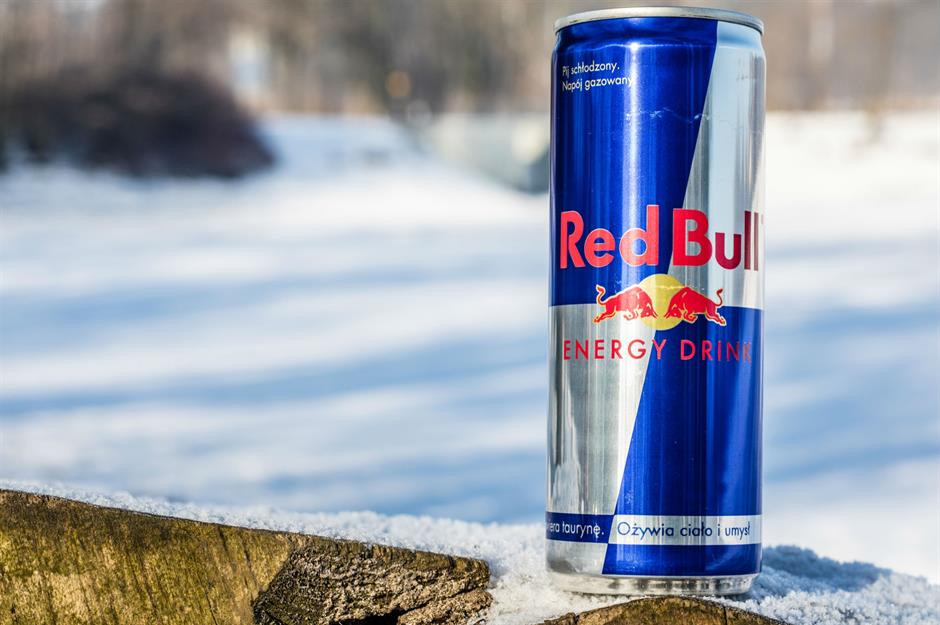
This energy drink known for its hefty caffeine content was launched in 1987 and fast became a favorite with sports players, students, and partygoers. It’s still the best-selling energy drink in the world – in 2022, 11.6 billion cans were sold worldwide.
1980s: portobello mushrooms
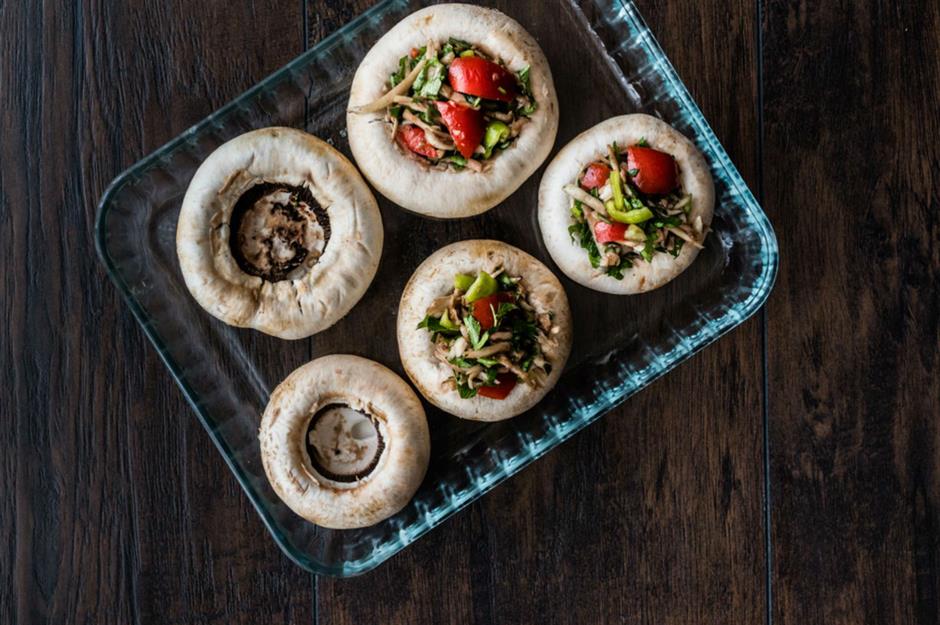
Beloved by vegetarians thanks to their meat-free meatiness, portobello mushrooms as we know them didn't exist until the late 1980s. When natural foods were coming into fashion, the exotic-looking mushroom – which is just an overgrown common mushroom – was renamed to great acclaim.
1980s: tricolore pasta salad
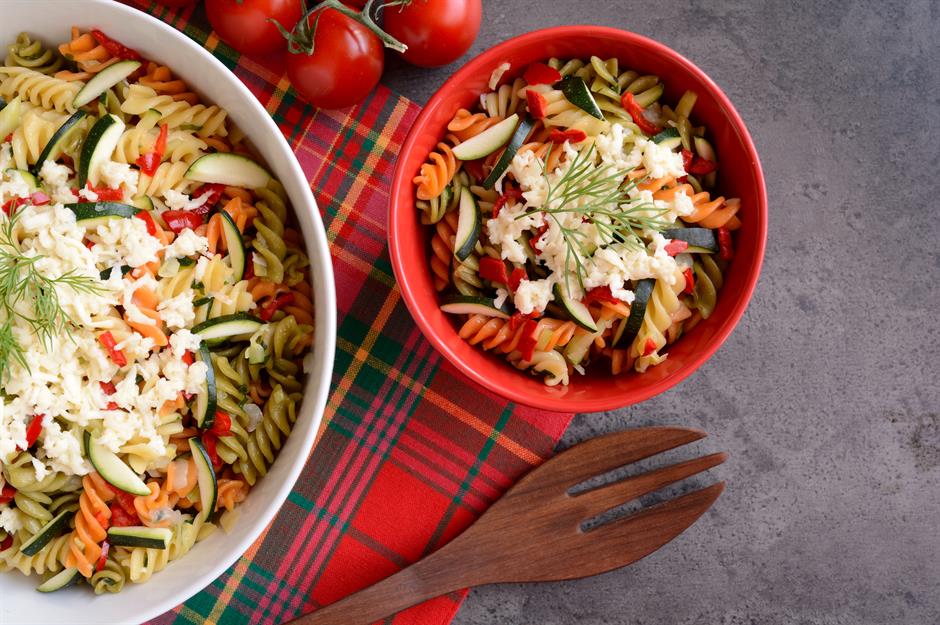
Although pasta salads have been around, as we know them, since the 1960s, they were a go-to dish in the 1980s. Cheap, practical, and versatile, they could be served hot or cold and fancy or simple, depending on the variety of pasta shapes used. Tricolore pasta salad, made from tri-color spiral pasta, was a true dish of the decade.
1980s: pesto
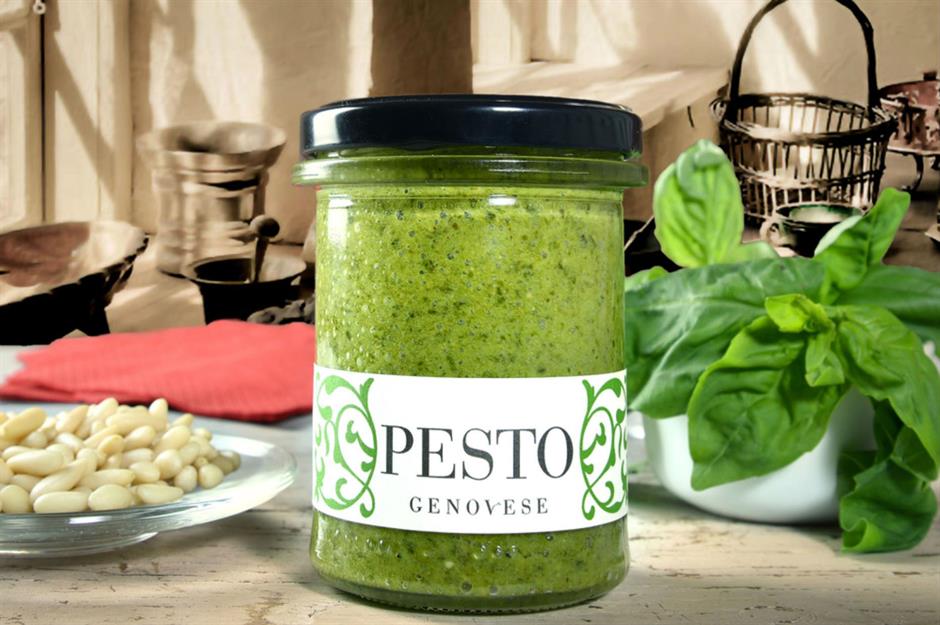
Pesto wasn’t invented in the 1980s, of course. The recipe is likely to have derived from an ancient Roman one, and it has been enjoyed in Italy and France since the 19th century. However, it shot to fame in the US in the 1980s, and has become a pantry essential for students and busy families.
1980s: Jell-O Pudding Pops
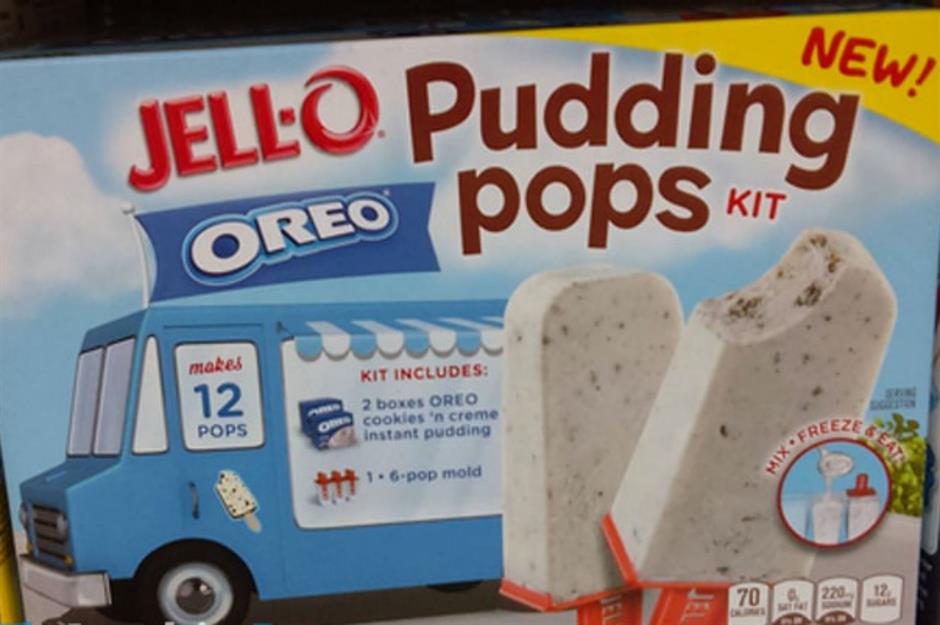
Once advertised by Bill Cosby, this frozen popsicle pudding was a huge hit in households through the 1980s. Both creamy and frosty, it came in flavors including chocolate, vanilla, chocolate swirled with vanilla, and Oreo. Though not available to buy in its original form anymore, it’s still possible to make your own.
1980s: Diet Coke
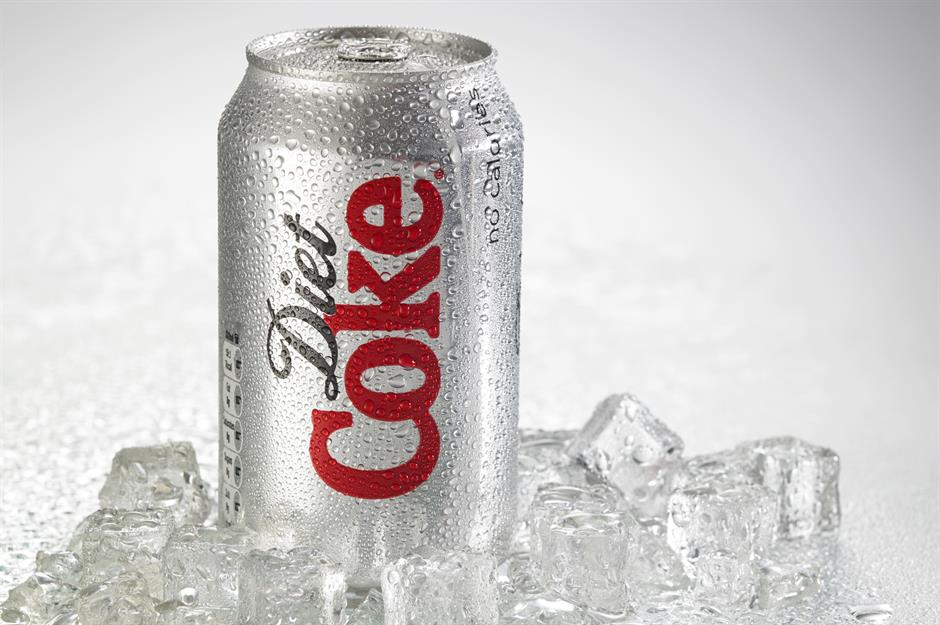
Probably one of the most famous brands to be born in the 1980s, Diet Coke launched in 1982, followed by a caffeine-free version a year later, then Cherry Coke and Diet Cherry Coke. Diet soda sales were at their greatest in 2005, but have been declining ever since as people increasingly opt for flavored waters instead.
1980s: frozen yogurt
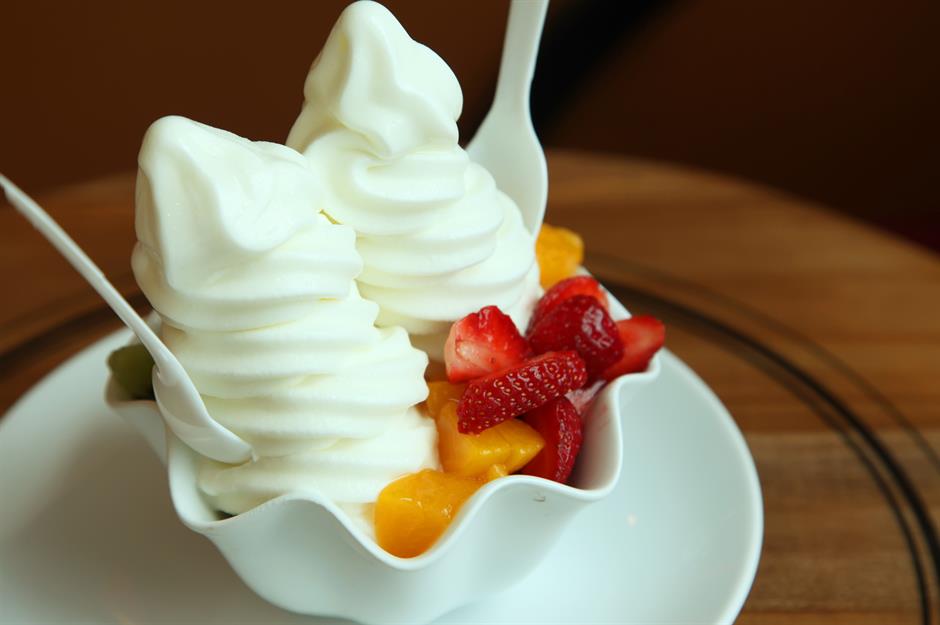
Before the 1980s, it was all about ice cream parlors, but when chains I Can’t Believe It’s Yogurt! and TCBY opened in the US, in the late 1970s and early 1980s, the frozen yogurt craze gathered pace. Bolstered by an increased demand for lower-calorie products, it's now estimated that more than 120 million servings of frozen yogurt are served annually in the US.
1980s: Yukon Gold potatoes
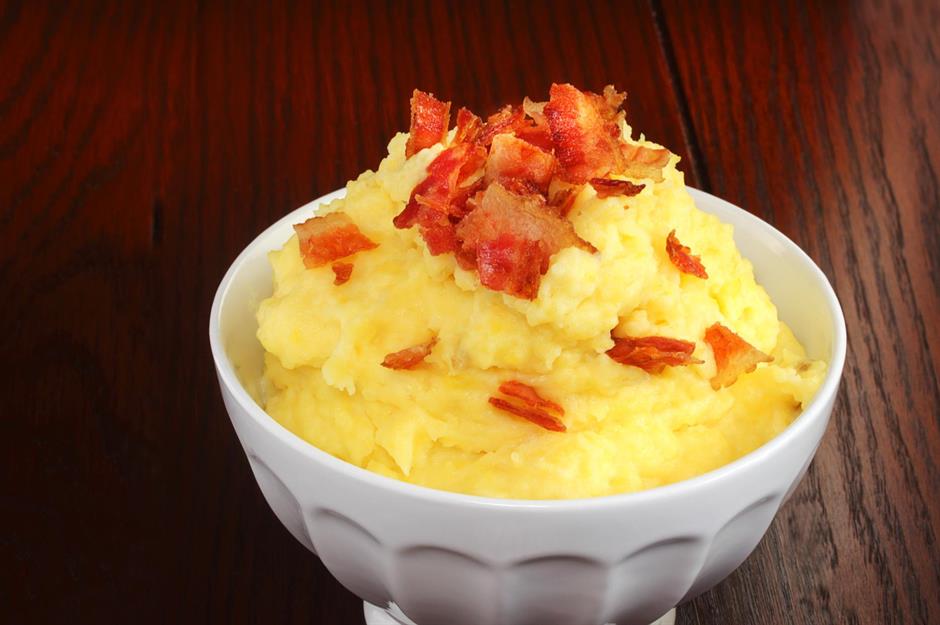
Named after the Gold Rush, this potato variety was first cultivated in the 1960s, but wasn't actually released to consumers until 1980. It has become one of the leading spud varieties in the States because of its versatility, creamy flavor, and appealing color. It's particularly popular for making creamy, buttery mashed potatoes.
1990s: Funfetti cake
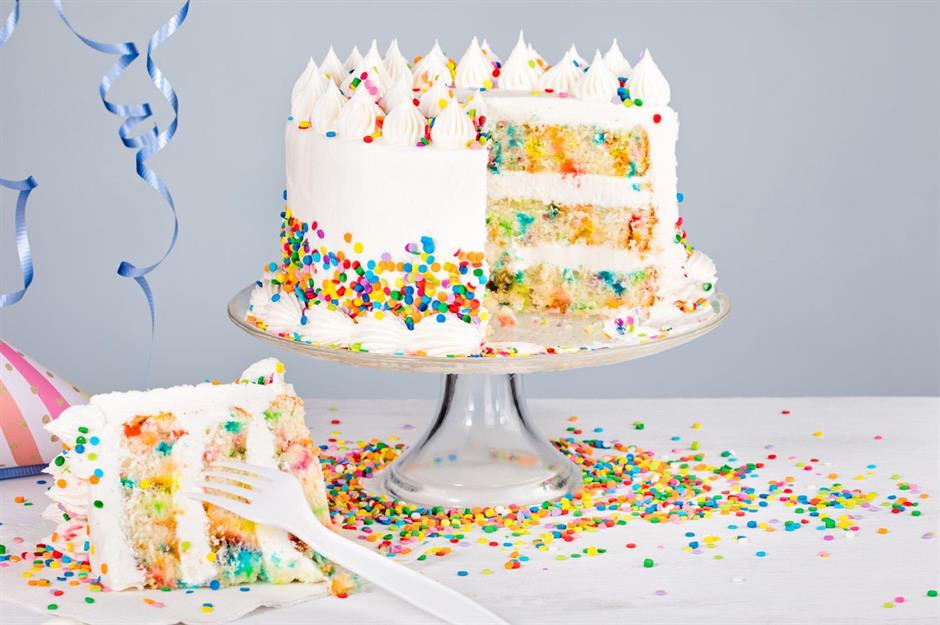
Pillbury introduced Funfetti white cake mix with rainbow sprinkles in 1989, and it became the must-have cake at children's birthday parties throughout the 1990s. Now the colorful sprinkles can be found on everything from ice cream and chocolate to cereal and wedding cakes – and Funfetti cake itself is enjoying something of a revival.
1990s: Dunkaroos
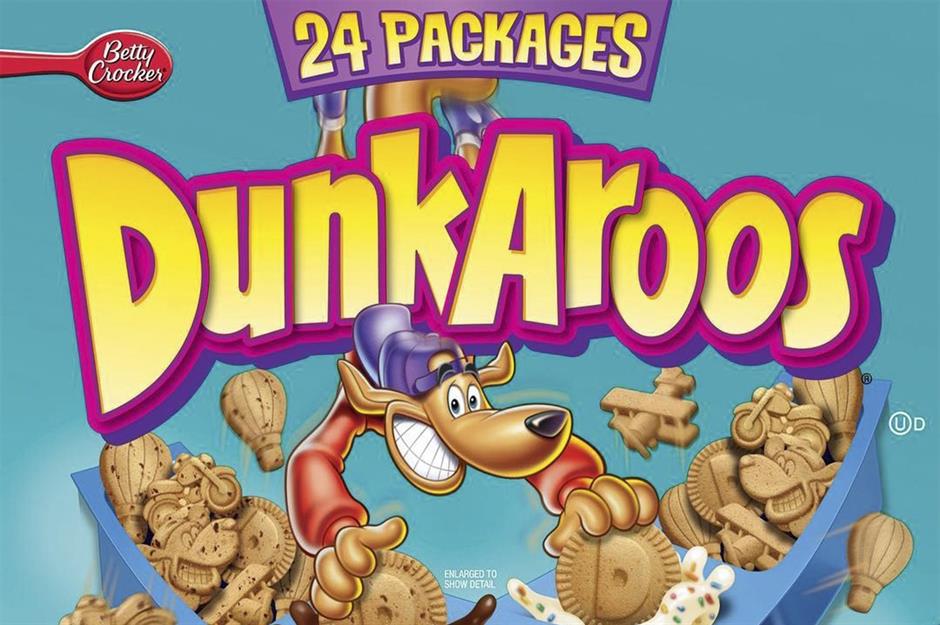
The children's sweet snack of the decade featured kangaroo-shaped cookies and smooth frosting in a plastic tray, and came in two flavors. Launched in 1990 by Betty Crocker, the cookies were available in chocolate chip with chocolate frosting, or cinnamon with vanilla frosting and rainbow sprinkles. They were discontinued in the US in 2012 but made a comeback in 2020, this time with a variety of flavors and shapes available, and containing less sugar.
1990s: Caesar salad
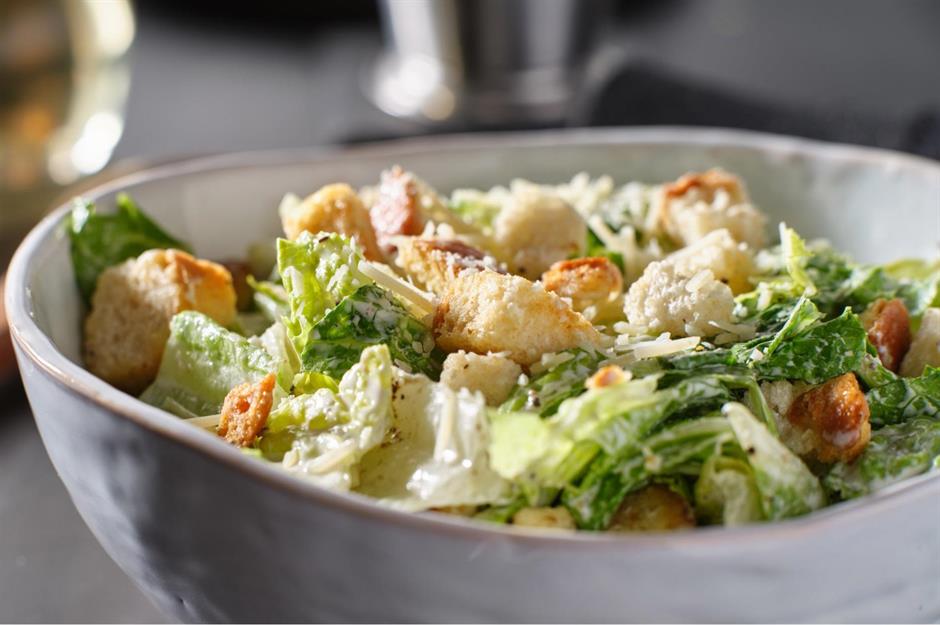
Invented in Mexico in the 1920s, Caesar salad reached peak popularity in the 1990s. Consisting of romaine lettuce, croutons, Parmesan, and an anchovy, garlic, egg yolk, and lemon juice dressing, and often served with chicken, it became a regular on restaurant menus. It was also a popular meal to make at home – store sales of ready-made Caesar dressings rose by almost a quarter in 1990.
1990s: Domino's breadsticks
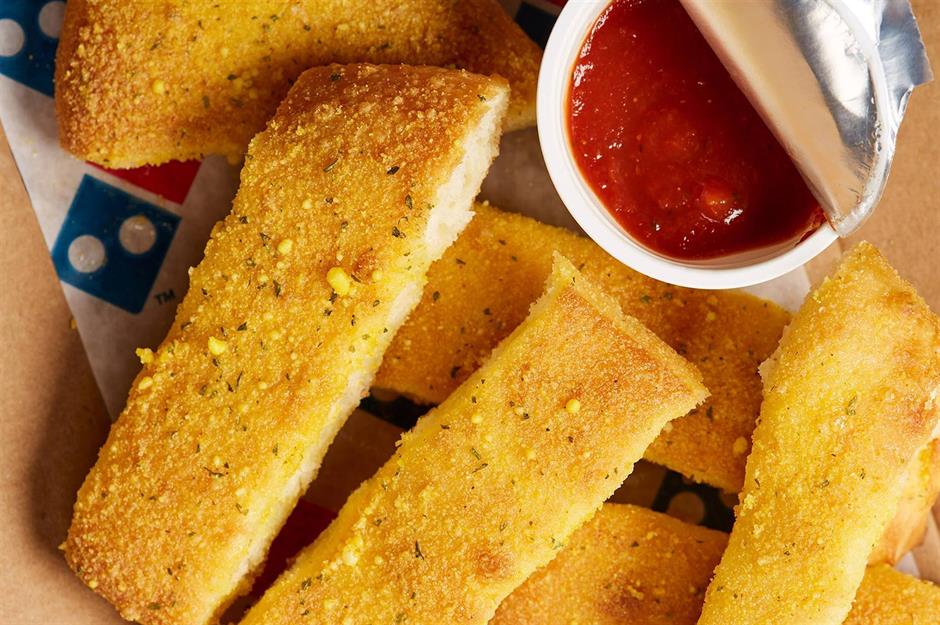
In 1992, Domino's added its first non-pizza item to its menu: breadsticks. Accompanied with a tangy, tomato-based marinara sauce, they were a resounding hit, and started the craze for having a dipping sauce with your pizza. It followed Papa John's and Little Caesars, which also had sauces available on their menus.
1990s: Warheads
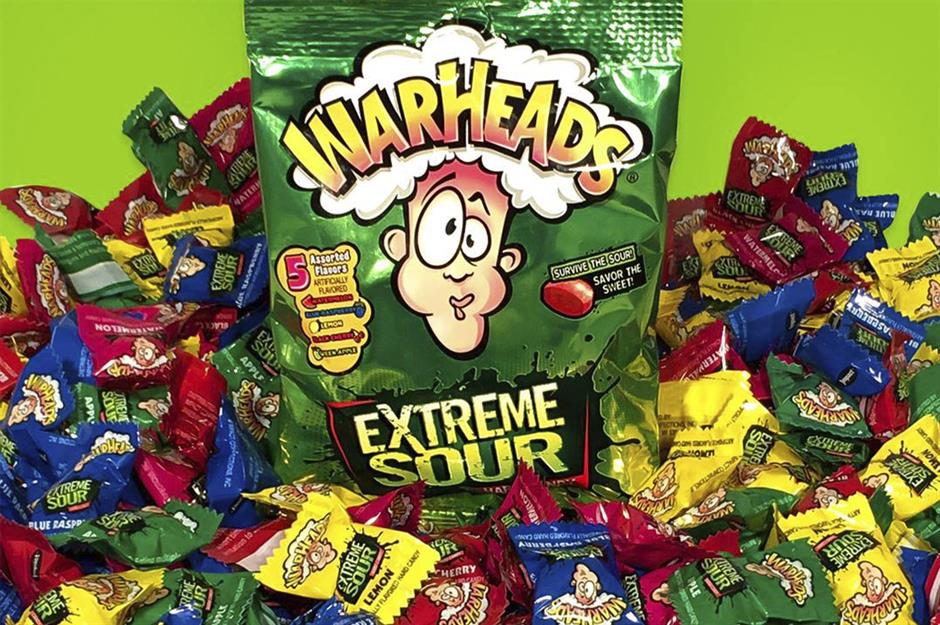
Launched in the US in 1993, Warheads are a mix of sour-flavored sweets that fans love to hate. Seeing how many of the extreme tasting candy you can manage to eat is a childhood favorite game that has stood the test of time. Warheads, which were invented in Taiwan in 1975, are still popular today.
1990s: Totino's Pizza Rolls
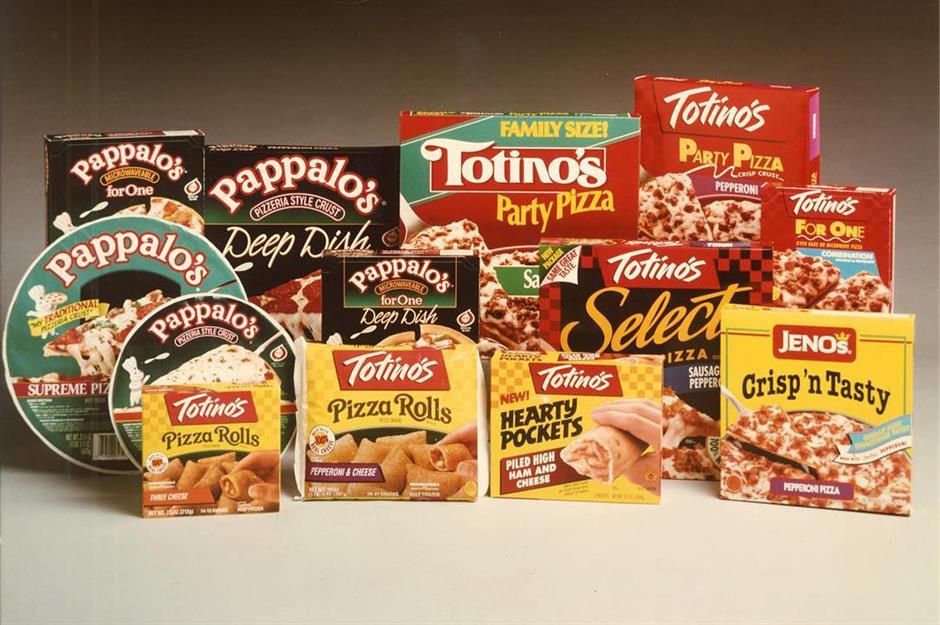
The Pillsbury Company introduced Totino's Pizza Rolls in 1993, and they consisted of a variety of pizza toppings and sauces rolled inside pizza crust. The first big name in the frozen pizza industry, Totino's was best known for its Party Pizza, but the rolls were the perfect 1990s snack and are still popular now.
1990s: McFlurry
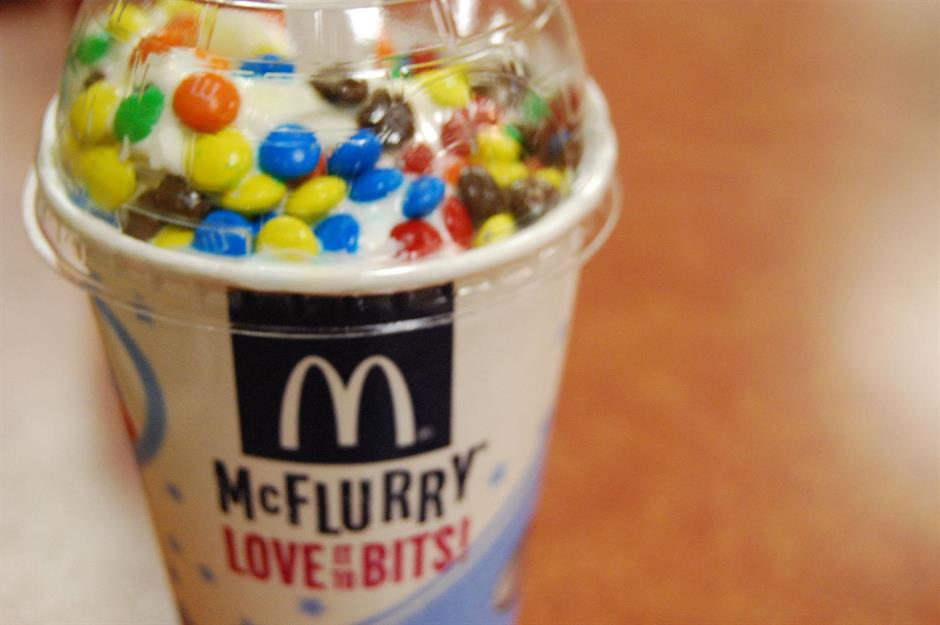
The fast food dessert of dreams, the McFlurry launched in 1995 and was actually the brainchild of a franchisee, Ron McLellan, in Bathurst, New Brunswick, Canada. Vanilla soft serve ice cream mixed with candies such as M&M's and Oreo pieces, the McFlurry was soon rolled out globally and remains a popular order to this day.
1990s: Rice Krispies Treats

The recipe for square Rice Krispies and marshmallow 'cakes' first appears on the cereal packaging back in 1940, and in 1995 Kellogg's cashed in, saving fans the bother of making the treats themselves. Rice Krispies Treats are sticky, crunchy, and gooey, and were a firm favorite in kids' lunchboxes in the 1990s.
1990s: stuffed crust pizza
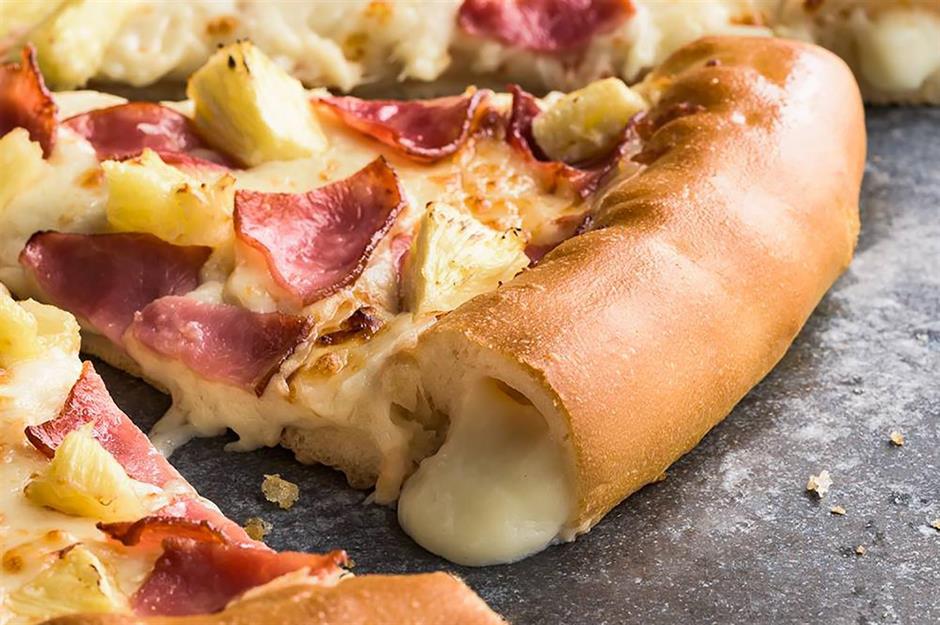
In a move that revolutionized pizza, chain restaurant Pizza Hut launched the stuffed crust pizza in 1995. Gooey mozzarella cheese oozed out of the thick edges of the pizza, and customers couldn't get enough. Former president Donald Trump randomly featured in the chain's TV commercials.
1990s: tuna mac 'n' cheese
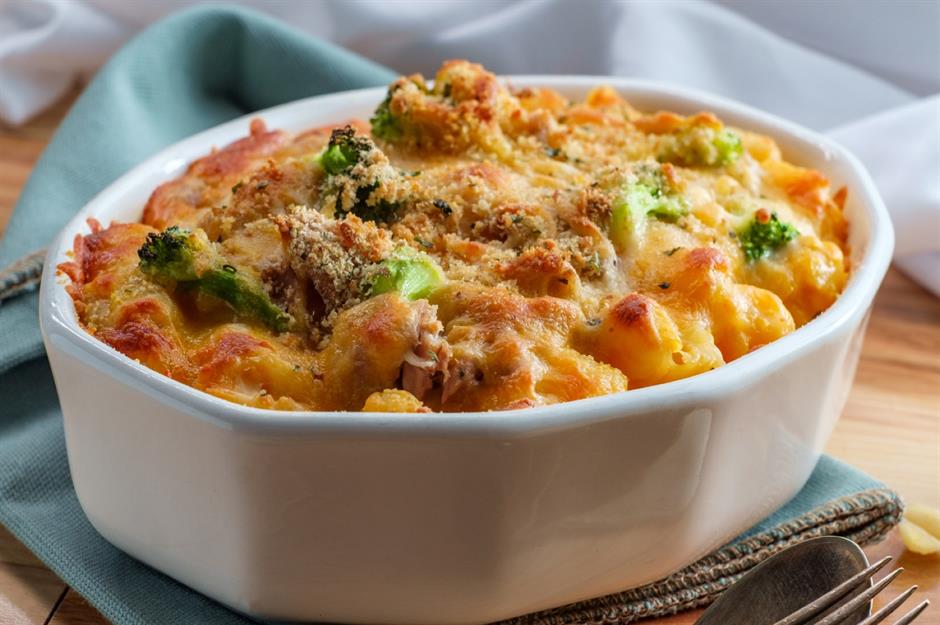
This meal was a family favorite for so many kids growing up in the 1990s. it was so popular that StarKist tuna even published an ad featuring a tuna mac 'n' cheese recipe, with the caption: 'Katie hates tomatoes. Joey hates anything green. And my husband hates anything new. But they all love your tuna Mac and Cheese.'
1990s: Viennetta
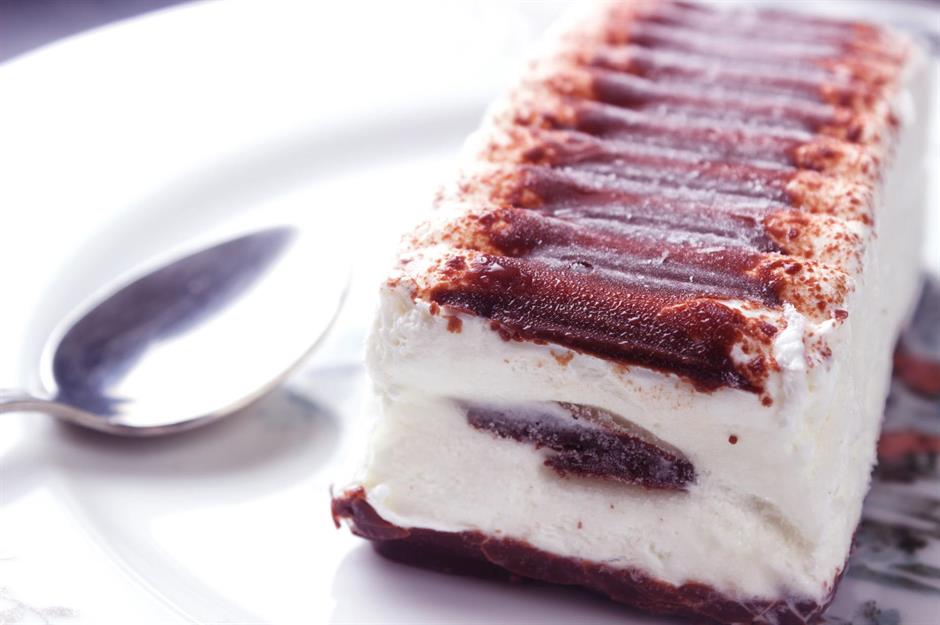
This ice cream 'cake' is a British classic but was the dessert of the 1990s for kids in the US and Canada, too. Its slogan – 'one slice is never enough' – was most certainly true. With layers of vanilla ice cream and wafer thin, crispy milk chocolate, Viennetta was considered a posh store-bought option thanks to its fancy advert. It disappeared from freezer aisles on this side of the Atlantic in the mid-1990s, making a triumphant return in 2021 and now manufactured by Good Humor
1990s: red velvet cupcakes

Versions of red velvet cake have been around for decades, but it became a modern phenomenon thanks to New York City's trendy Magnolia Bakery, which opened in the West Village in 1996. The bakery's red velvet cupcakes with cream cheese frosting became super popular throughout the city, with their fame going global when the bakery appeared in a 2001 episode of Sex and the City.
1990s: French Toast Crunch
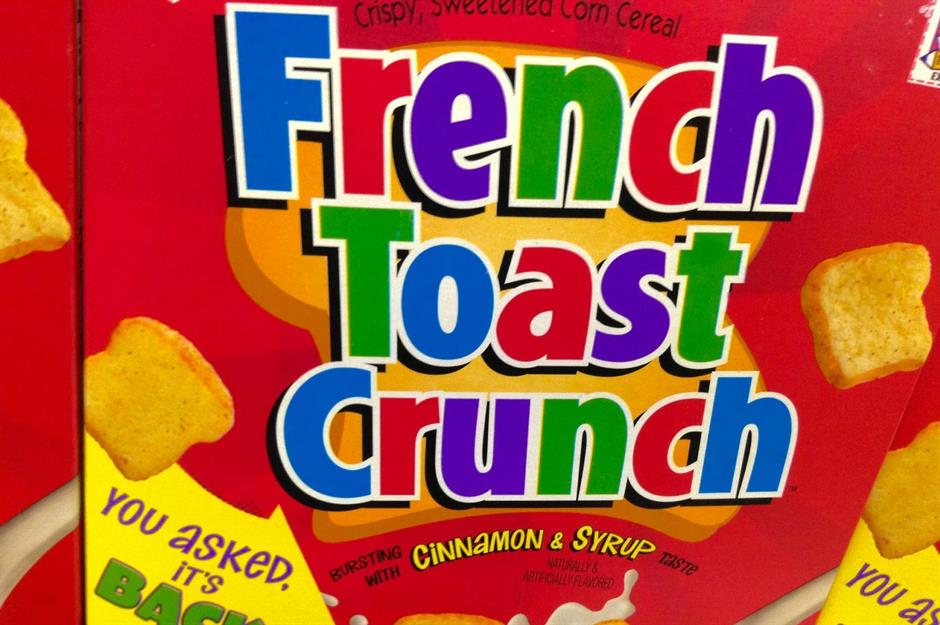
What could be a better breakfast than something that combines toast and cereal in one? French Toast Crunch features tiny toast-shaped pieces of corn cereal flavored with cinnamon and syrup. It launched in 1996, and the General Mills cereal is still a kids' favorite today, despite being discontinued briefly in 2006.
1990s: Yoplait Go-Gurt

Launched in 1997, these squeezy fruit-flavored yogurt tubes combined fun characters and a free 'fingerboard' skateboard that 1990s kids adored. Still popular today, they can be frozen to make popsicles and come in a variety of flavors, including bestsellers strawberry and berry.
1990s: KFC Original Recipe Sandwich
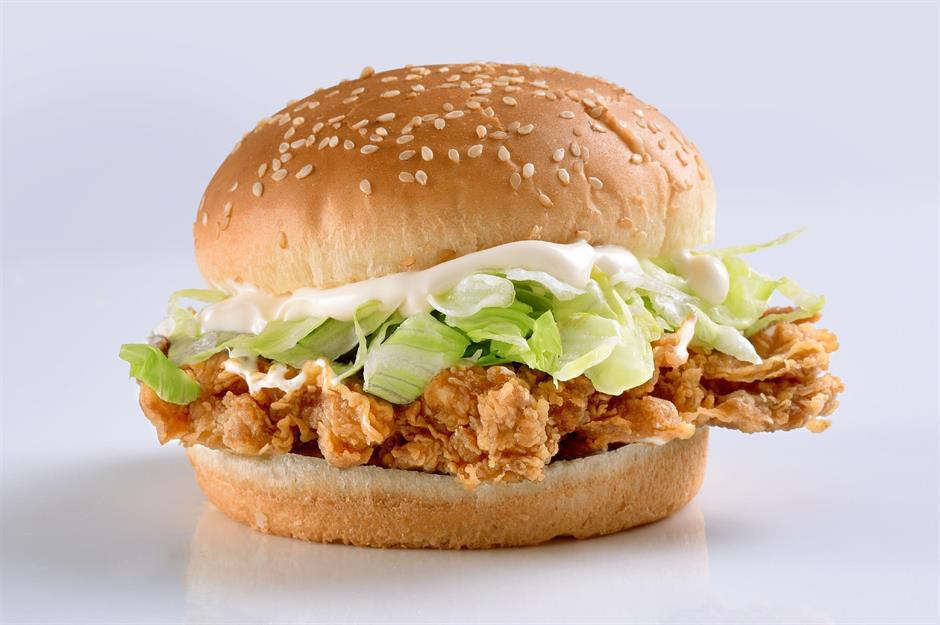
KFC launched their famous chicken sandwich in 1999, featuring Colonel Sanders' original recipe chicken, salad, and mayo in a soft seeded bun. Early commercials teased rival fast food chains with the line 'them burger boys would love to have this,' and it's still a much-loved menu choice today.
2000s: Baby Bottle Pops
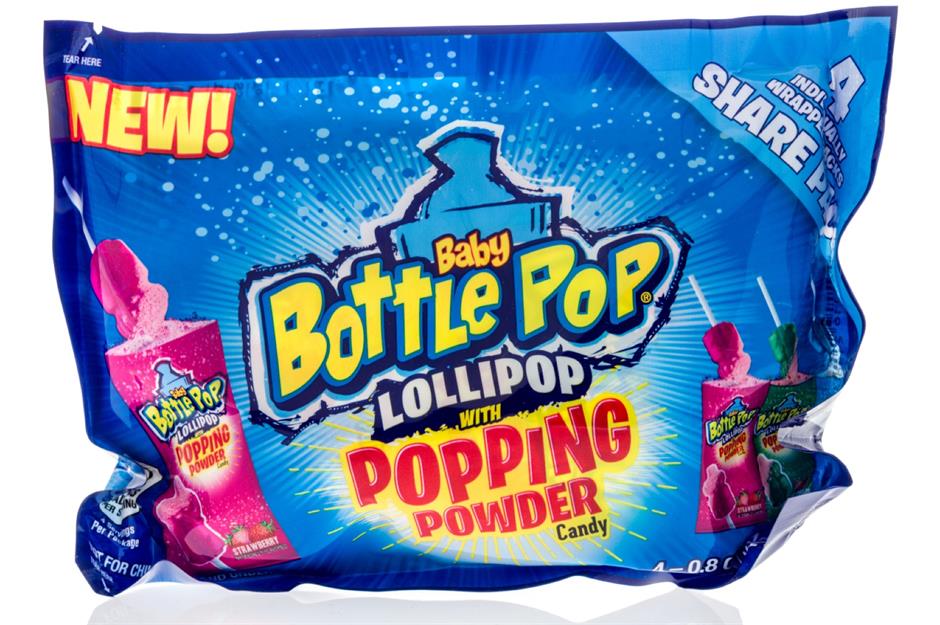
These Topps lollipops launched in 1998 but really took off in the 2000s, with the introduction of new flavors and a 2008 jingle famously sung by the Jonas Brothers. The candies are in the shape of a baby bottle, with the lollipop part being the bottle tip and powdered dipping sugar contained in the plastic bottle. Now made by Bazooka, they're still available in selected stores.
2000s: Trix Yogurt

A lunchbox favorite, Trix yogurt came in fun flavors such as Raspberry Rainbow, Cotton Candy, and Watermelon Burst. Manufactured by General Mills, Trix was discontinued in 2016 but a petition calling for its return was successful, and Yoplait announced the return of its strawberry and berry flavors in 2021.
2000s: Ritz Handi-Snacks
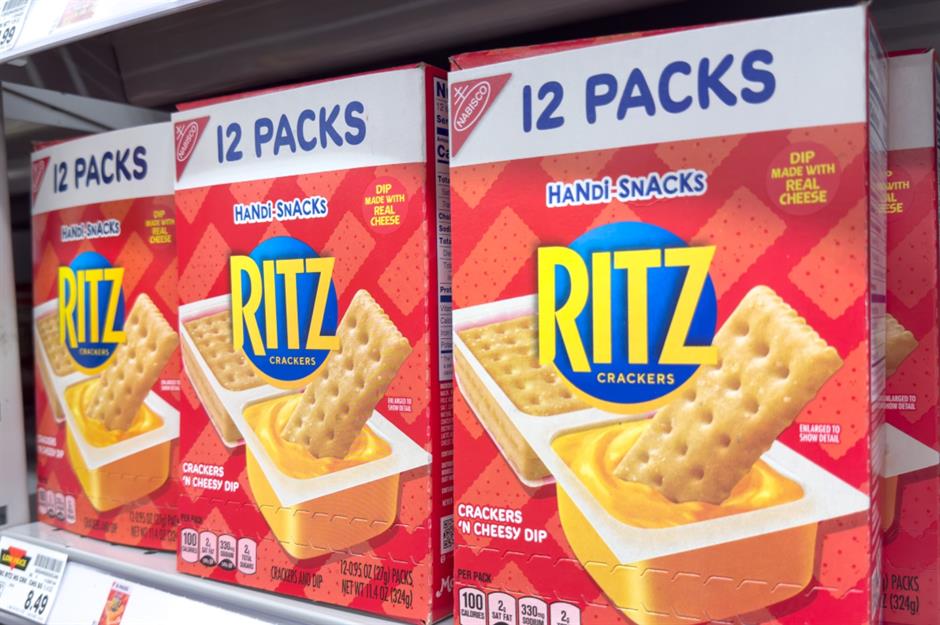
Every kid in the 2000s surely had a Kraft Ritz Handi-Snack in their lunchbox at least once. Parents everywhere were thrilled with the convenience of the popular cheese and crackers snack, which came with a red plastic stick 'knife' to make spreading easier. The red stick was eventually removed for environmental reasons, but the popularity of these snacks endures.
2000s: açaí bowl
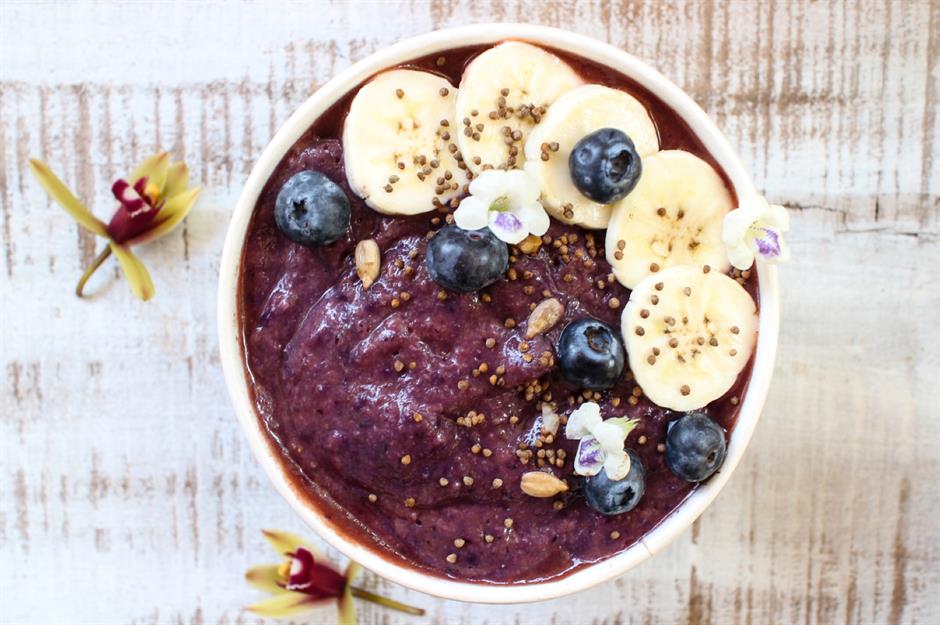
Brothers Ryan and Jeremy Black, and their friend Edmund Nichols, were on holiday in Brazil in 1999 when they first tried açaí bowls – açaí berry pulp often mixed with almond milk with a variety of fruit and nut toppings. In 2000, they formed a company importing frozen açaí to the States and a phenomenon was born.
2000s: Spongebob Squarepants Popsicle
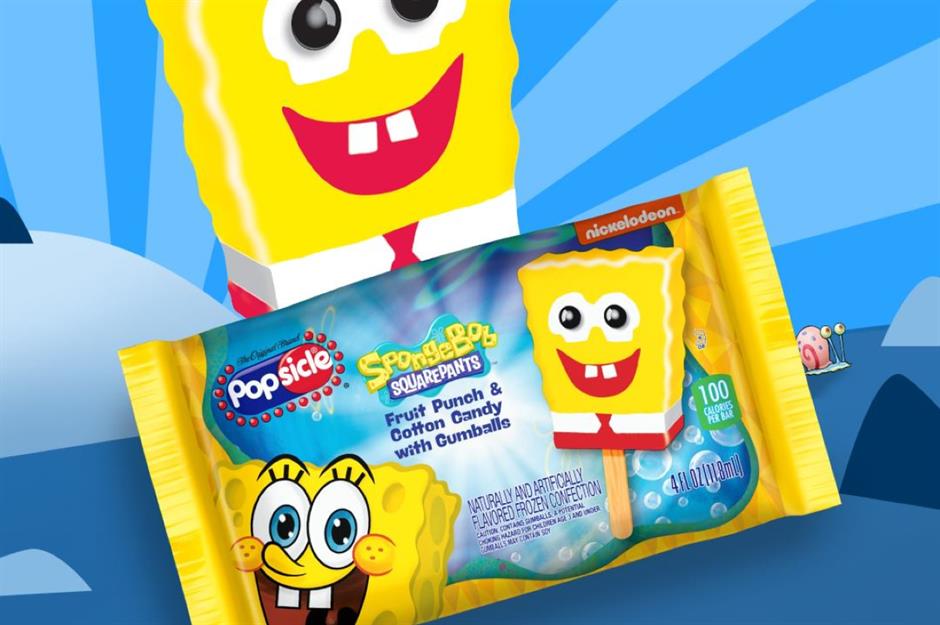
Cult cartoon character Spongebob Squarepants launched in popsicle form in 2001, to the delight of his army of child fans. With fruit punch and cotton candy flavors, the original popsicle also featured gumball eyes. Earlier this year, fans were outraged when Popsicle announced Spongebob's eyes were to be chocolate instead of gumballs, with a petition springing up immediately – watch this space!
2000s: ramen
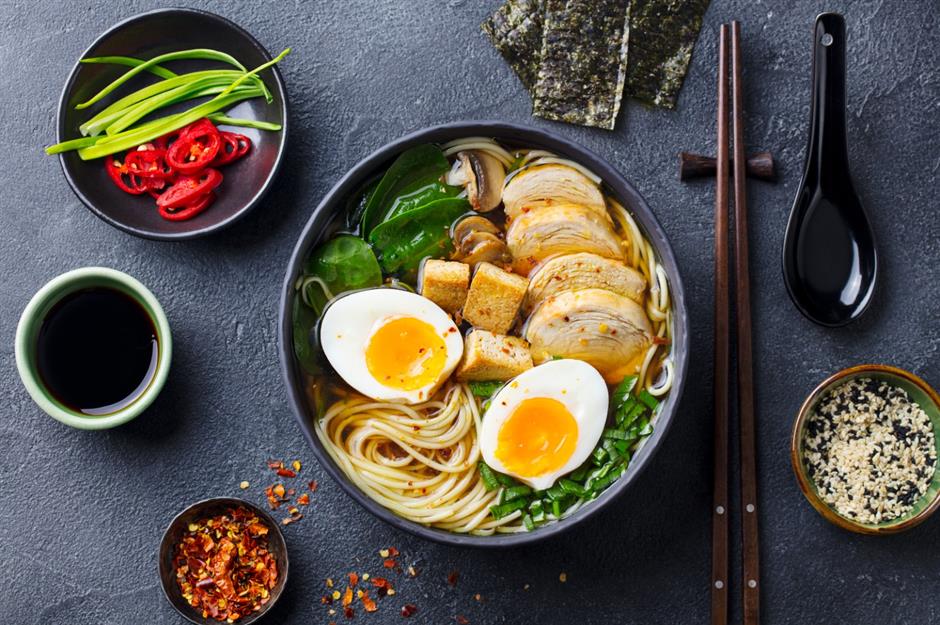
While the Japanese noodle dish ramen has been around for centuries, chef David Chang is credited with making it trendy. When he opened New York City's Momofuku Noodle Bar in 2004 serving elevated ramen, people lined up down the street. A ramen craze soon spread across the country and beyond.
2000s: Shrek Twinkies
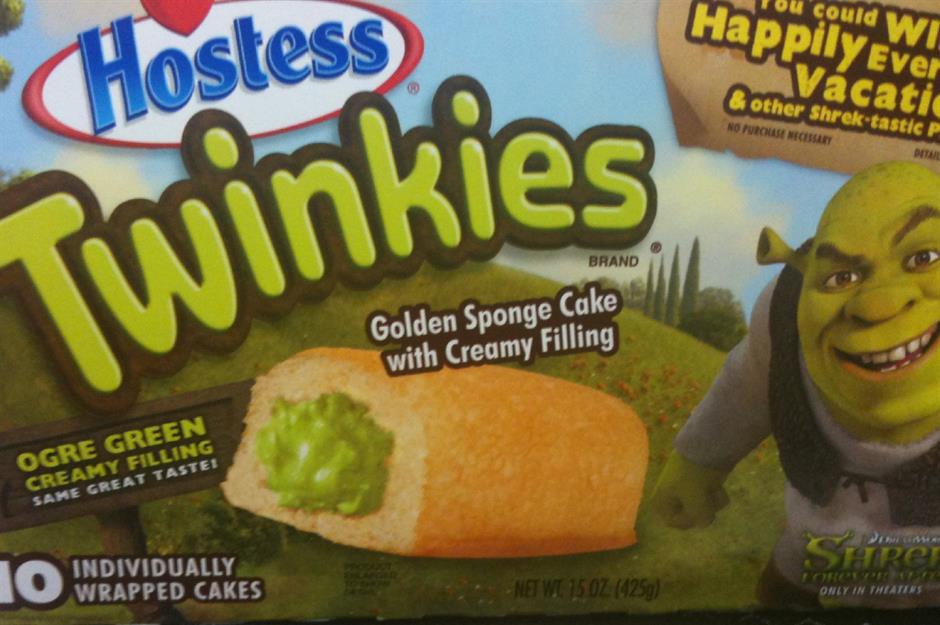
A promotional tie-in for movies Shrek 2 and Shrek Forever After, Shrek Twinkies from Hostess launched in 2004. They featured golden sponge cake with a creamy vanilla filling, except the filling was a bright green like everyone's favorite ogre. They were discontinued in 2010, but many have fond memories of the sweet treat.
2000s: Hershey's Kissables
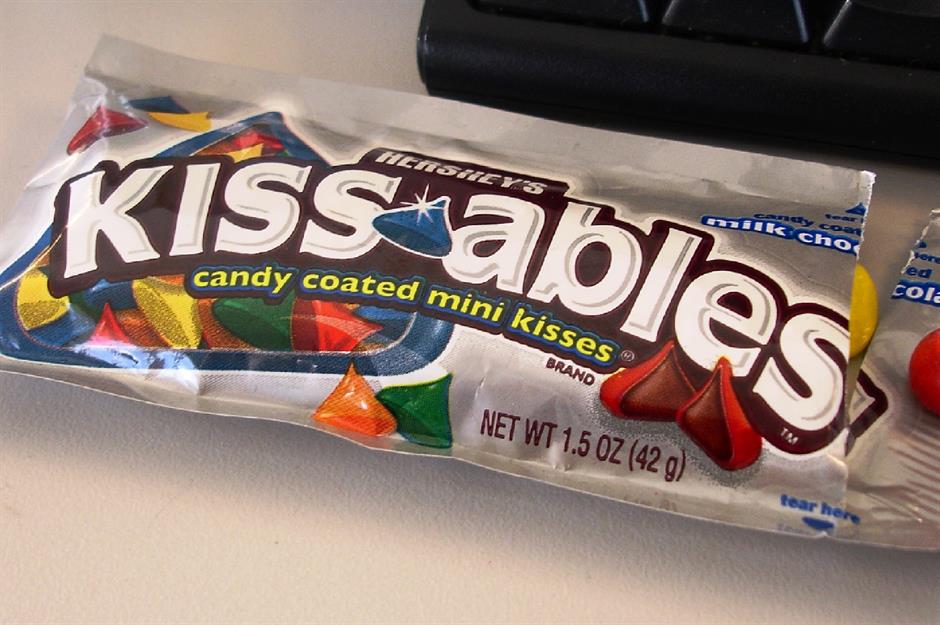
These miniature Hershey's Kisses, covered in a hard candy shell, were similar to M&M's and instantly popular when they launched in 2005. They came in red, orange, green, and blue, with limited-edition colors for holidays, such as pink and white for Valentine's Day. Their popularity plummeted when the Hershey Company started using cheaper ingredients, and they were finally discontinued in 2009. Diehard fans are still campaigning for the return of the original version.
2000s: avocado toast
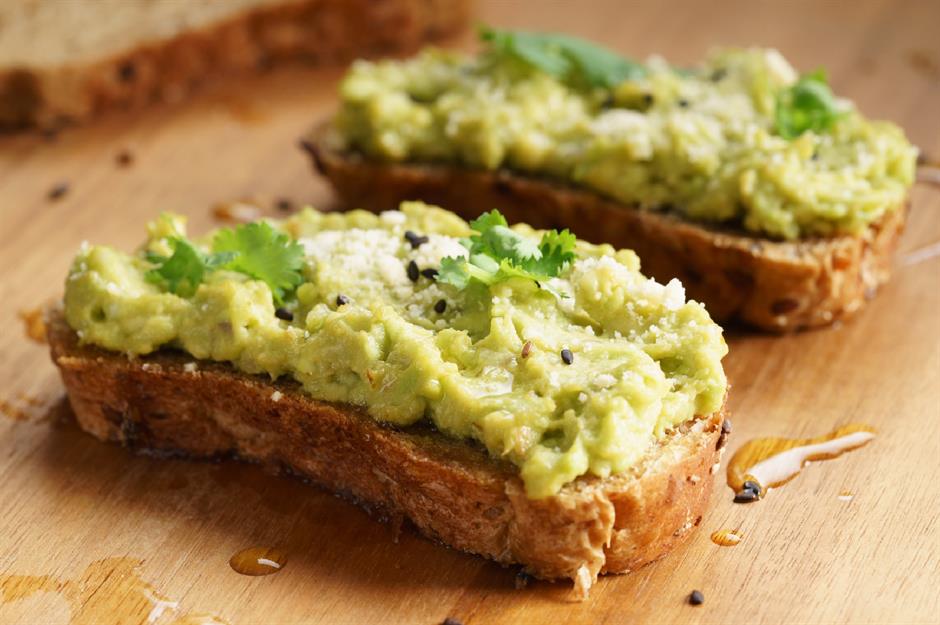
In areas across the States where avocados are commonly found such as California, it's always been pretty common to eat the fruit on top of toast. But this healthy dish turned into a global breakfast craze in the 2000s. New York's Café Gitane is often cited as being one of the first restaurants to feature it sprinkled with chili flakes on the menu around 2006. Whoever did it first, it seems avo on toast is here to stay.
2000s: Cake pops
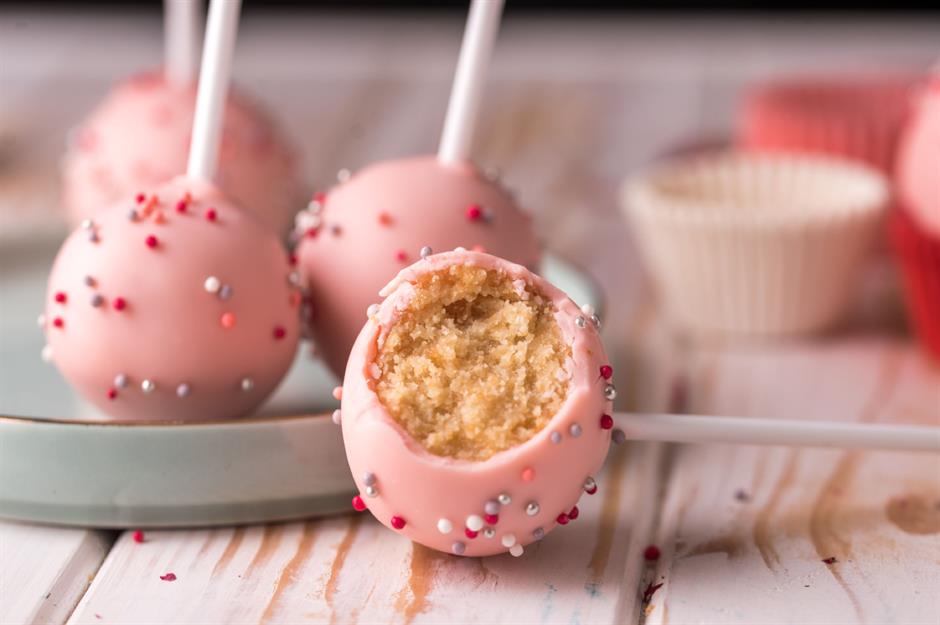
These bite-size cake lollipops are believed to have been invented by Angie Dudley, a baker based in Atlanta, Georgia, who shared a recipe for 'cakesicles' on her Bakerella blog in 2008. She later showcased her creation on Martha Stewart's TV show, and cake pop mania swept through America (and beyond). These tiny bites of deliciousness first appeared on Starbucks menus in 2011 and are still hugely popular.
2000s: bacon
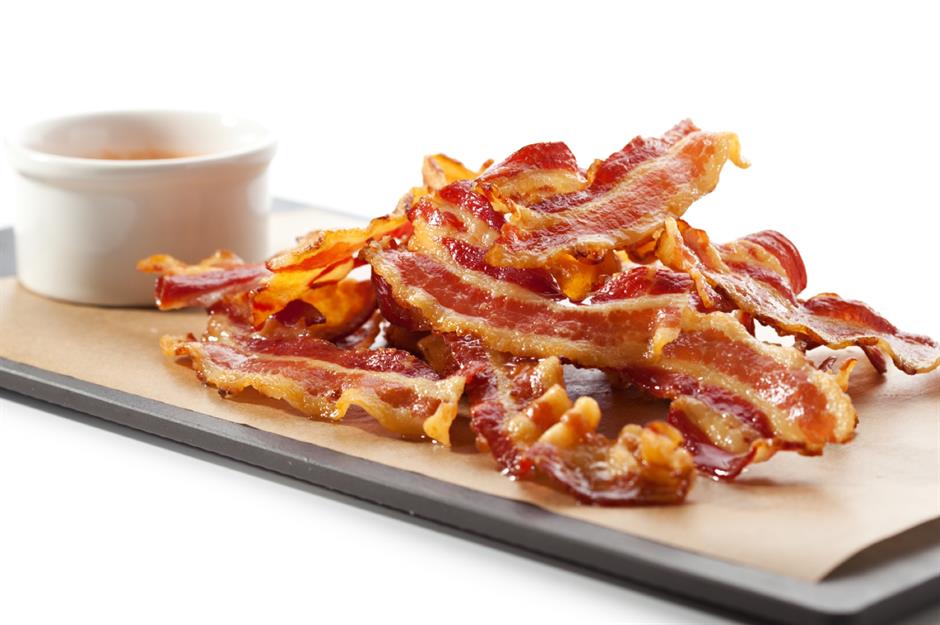
It wasn't exactly a new favorite food, but America went bacon mad in the mid-2000s. Suddenly, it was everywhere, from ice cream parlors serving bacon-bourbon flavor to bakeries selling maple-glazed donuts topped with bacon crumbs. The trend for wrapping turkeys in bacon for Thanksgiving started here, too. So-called 'bacon mania,' as it was dubbed in the press, has shown no signs of abating, with nearly $5 billion worth of rashers sold in 2018.
Now discover the retro dishes we'd love to see back on menus
Comments
Be the first to comment
Do you want to comment on this article? You need to be signed in for this feature